These warbler-like birds are found in Madagascar.
They are small forest birds and are not closely related to the Sylviidae Warblers or the Timaliidae Babblers that they have been previously linked with. Their resemblance is due to convergent evolution. Most Malagasy warblers live in the humid rainforests in the east of Madagascar, though a few species are found in the drier south west of the island. They feed on insects and will form mixed-species feeding flocks of up to six species while foraging.
Genus Bernieria - 1 species
Bernieria, Long-billed Bernieria madagascariensis Found: Madagascar


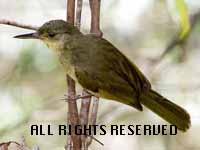
Genus Crossleyia - 1 species
Yellowbrow, Madagascar also Yellow-browed Oxylabes Crossleyia xanthophrys Found: Madagascar
Image by: 1) nlb birder
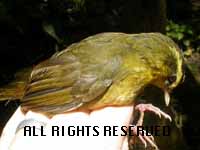
Genus Cryptosylvicola - 1 species
Warbler, Cryptic Cryptosylvicola randrianasoloi Found: Madagascar
Image by: 1) Marcus Lilje
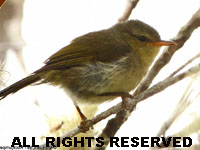
Genus Hartertula - 1 species
Jery, Wedge-tailed Hartertula flavoviridis Found: east Madagascar

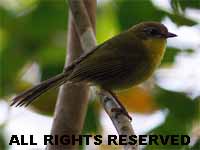
Genus Oxylabes - 1 species
Oxylabes, White-throated Oxylabes madagascariensis Found: Madagascar
Image by: 1) Joseph Smit 2) Paul French
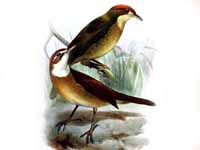

Genus Randia - 1 species
Warbler, Rand's Randia pseudozosterops Found: Madagascar
Image by: 1) foto lulu

Genus Thamnornis - 1 species
Thamnornis Thamnornis chloropetoides Found: Madagascar
Image by: 1) Ross Tsai 2) Kristian Sevensson
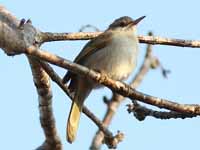
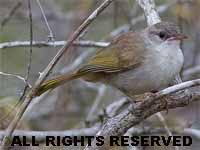
Genus Xanthomixis
Tetraka, Appert's Xanthomixis apperti Found: southwest Madagascar
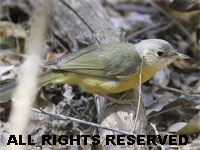
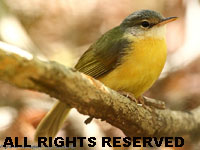
Tetrala,_Dusky Xanthomixis tenebrosa Found: Madagascar
Image by: 1) hbw.com

Tetraka, Gray-crowned Xanthomixis cinereiceps Found: Eastern and northern Madagascar

Tetraka, Spectacled Xanthomixis zosterops Found: Madagascar
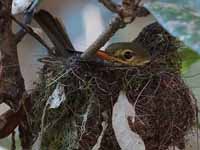

The Cisticolidae family of small passerine birds is a group of about 110 warblers found mainly in warmer southern regions of the Old World. This family probably originated in Africa, which has the majority of species, but there are representatives of the family across tropical Asia into Australasia, and one species, the Zitting cisticola, even breeds in Europe.
These are generally very small birds of drab brown or grey appearance found in open country such as grassland or scrub. They are often difficult to see and many species are similar in appearance, so the song is often the best identification guide. These are insectivorous birds which nest low in vegetation.
Genus Apalis
They are found in forest, woodlands and scrub across most parts of sub-Saharan Africa. They are slender birds with long tails and have a slender bill for catching insects. They are typically brown, grey or green above and several species have brightly coloured underparts. Males and females are usually similar in appearance.
Apalis,_Bamenda Apalis bamendae Found: Cameroon
Image by: 1) Nigel Voaden 2) Marcel Holyoak


Apalis,_Bar-throated Apalis thoracica Found: Africa
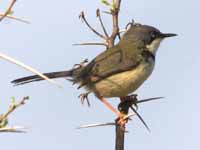
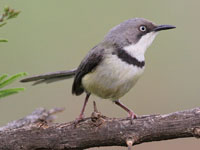
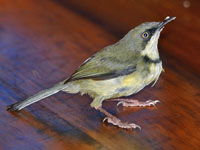
Apalis,_Black-capped Apalis nigriceps Found: Africa
Image by: 1) Henrik Gronvold 2) Francesco Veronesi - Ghana
1) Male - top; female - bottom
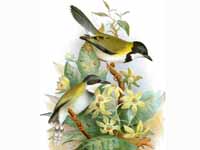
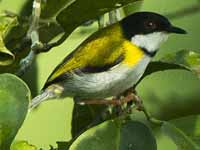
Apalis,_Black-collared Apalis pulchra Found: Africa



Apalis,_Black-faced also Mountain-masked Apalis Apalis personata Found: Africa
Image by: 1) Tom Tarrant - Uganda 2) Lip Kee - Rwanda
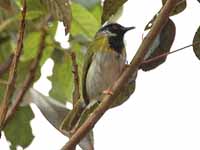
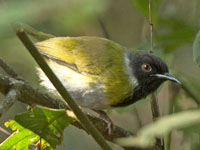
Apalis,_Black-headed Apalis melanocephala Found: Africa
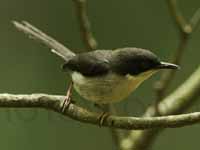
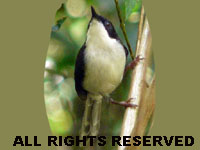
Apalis,_Black-throated Apalis jacksoni Found: Africa
Image by: 1, 2) Dave Curtis - Kenya 3, 4) Nick Athanas - Kenya



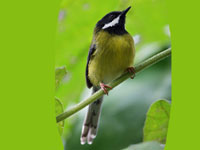
Apalis,_Brown-headed Apalis alticola Found: central and east Africa
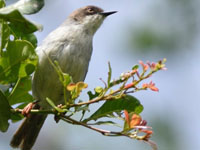
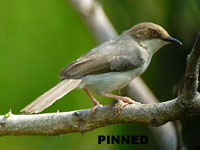
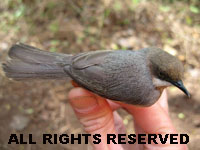
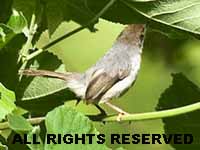
Apalis,_Buff-throated Apalis rufogularis Found: Africa
1, 2) Female 3) Male
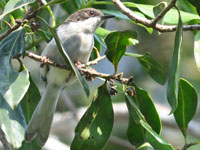
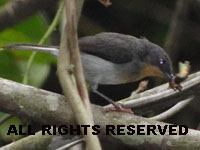

Apalis,_Chapin's Apalis chapini Found: Malawi, Tanzania, Zambia
Image by: 1)Peter_Steward 2) Per_Holmen - Tanzania 3) Louis_Andre_Hansen - Tanzania
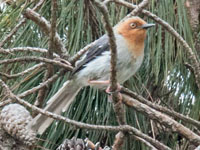
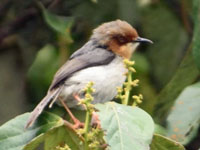
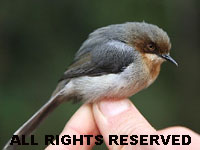
Apalis,_Chestnut-throated Apalis porphyrolaema Found: Africa
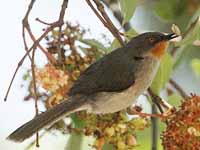
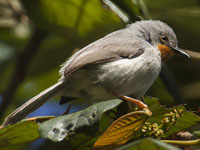
Apalis,_Chirinda Apalis chirindensis Found: Zimbabwe, Mozambique.

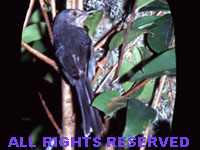
Apalis,_Gosling's Apalis goslingi Found: Africa
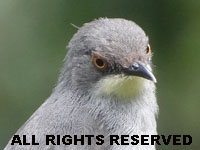
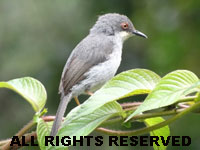
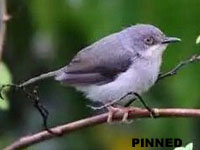
Apalis,_Gray Apalis cinerea Found: Africa
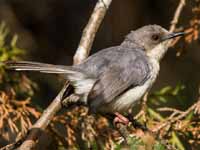
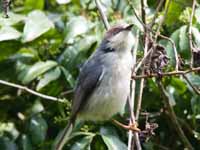
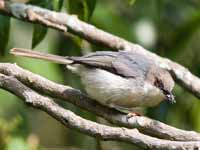
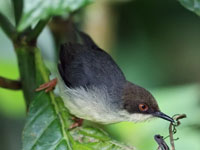
Apalis,_Karamoja Apalis karamojae Found: Tanzania, Uganda, Kenya
Image by: 1) Steve Popple - Tanzania 2) Per Holmen 3) Seronera_MikeGraham

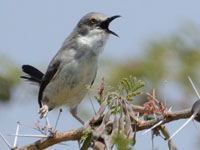
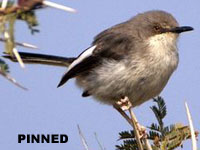
Apalis,_Kungwe Apalis argentea Found: Burundi, Democratic Republic of the Congo, Rwanda, Tanzania.

Apalis,_Masked also Lowland Masked Apalis Apalis binotata Found: Africa
Image by: 1) Dick Daniels - specimen in Nairobi National Museum, Kenya 2) Nik Borrow
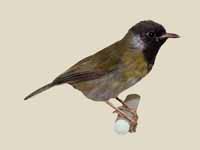

Apalis,_Rudd's Apalis ruddi Found: Malawi, Mozambique, South Africa

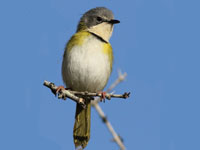
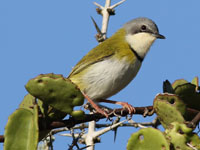
Apalis,_Ruwenzori also Collared Apalis Apalis ruwenzorii Found: Africa
Image by: 1) Marcell Claassen - Rwanda

Apalis,_Sharpe's Apalis sharpii Found: Côte d'Ivoire, Ghana, Guinea, Liberia, Sierra Leone.
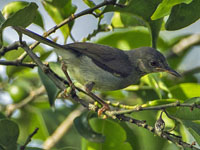

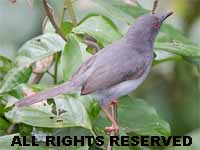

Apalis,_White-winged Apalis chariessa Found: Kenya, Malawi, Mozambique, Tanzania.
Image by: 1) Dave_Montreuil 2) Margaret_Westrop


Apalis,_Yellow-breasted Apalis flavida Found: Africa
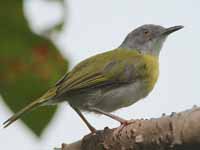
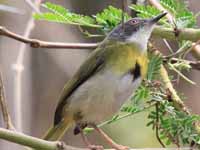



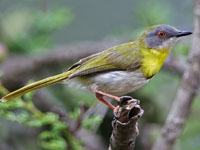
Genus Artisornis
Tailorbird,_African also Red-capped Forest-Warbler Artisornis metopias Found: Mozambique, Tanzania
Image by: 1) Per_Holmen 2) Pinned 3) Pinned
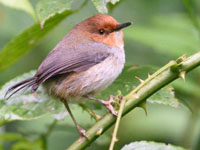
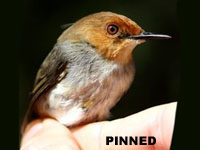
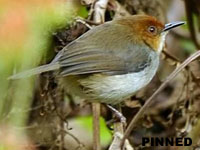
Tailorbird,_Longbilled Artisornis moreaui Found: Mozambique, Tanzania
Image by: ) Per Holmen 2) Markus_Lilje


Genus Bathmocercus
Warbler, Black-capped Rufous- also Black-headed Rufous-Warbler Bathmocercus cerviniventris Found: Africa
Image by: 1) Joseph Smit
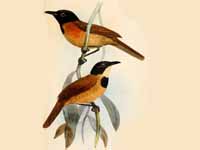
Warbler, Black-faced Rufous Bathmocercus rufus Found: Africa

Genus Calamonastes
Warbler, Barred Wren- Calamonastes fasciolatus Found: southern Africa
Image by: 1) Dick Daniels - specimen in Nairobi National Museum, Kenya 2) Ian White
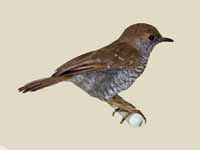
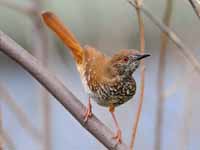
Warbler, Gray Wren Calamonastes simplex Found: Africa
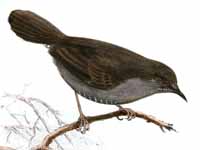
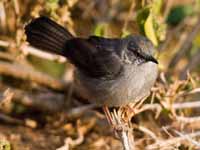
Warbler, Miombo Wren- also Stirlings Wren-Warbler Calamonastes undosus Found: Africa
Image by: 1) Nigel Voaden - Congo 2) Dian Derksen - Botswana
2) Stirlings Wren-Warbler: Calamonastes (undosus) stierlingi
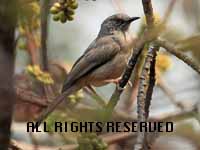

Genus Camaroptera
Camaroptera,_Gray-backed Camaroptera brevicaudata Found: Africa
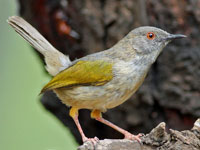
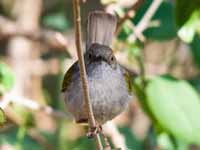
Camaroptera,_Green-backed Camaroptera brachyura Found: Africa
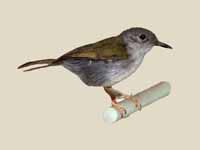


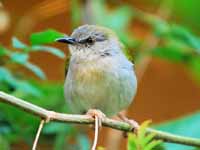
Camaroptera_ Olive-green Camaroptera chloronota Found: Africa
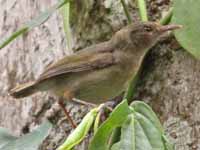
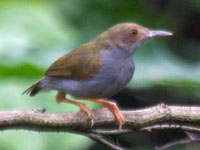
Camaroptera,_Yellow-browed Camaroptera superciliaris Found: Africa
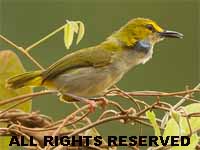
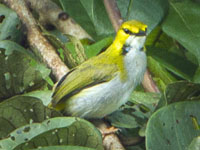
Genus Cisticola
Because of their small size and brown plumage, they are more easily heard than seen.
The female builds a discreet nest deep in the grasses, often binding living leaves into the soft fabric of felted plant down, cobweb, and grass. The following refernces have been used for some descriptions:
Birds of Kenya and Northern Tanzania by Zimmerman, Turner and Pearson.
Bird of Southern Africa by Newman.
Cisticola, Aberdare Cisticola aberdare Found: Kenya
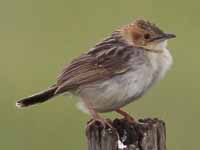

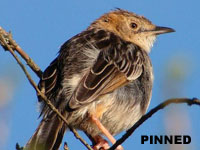
Cisticola, Ashy Cisticola cinereolus Found: Africa
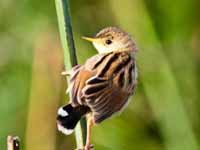
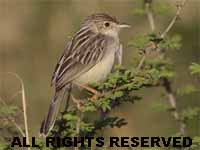
Cisticola, Black-backed Cisticola eximius Found: Africa
1, 2) Female 3) Male
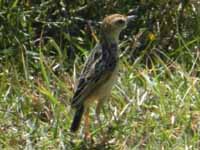
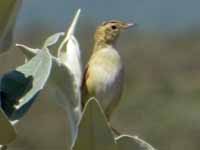

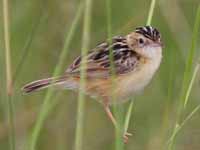
Cisticola,_Black-lored Cisticola nigriloris Found: Malawi, Tanzania, Zambia
Image by: 1) Dave Appleton - Malawi 2) Per_Holmen - Tanzaniaq
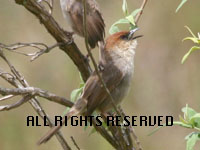
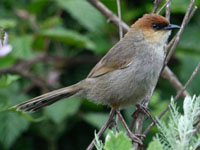
Cisticola,_Black-tailed also Slender-tailed Cisticola Cisticola melanurus Found: Angola, D.R. Congo
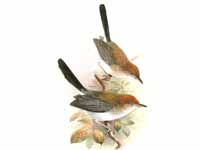
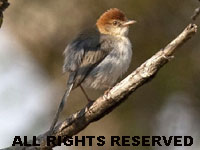

Cisticola, Boran Cisticola bodessa Found: Eritrea, Ethiopia, Kenya, South Sudan
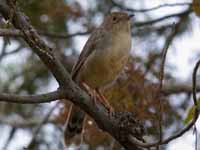
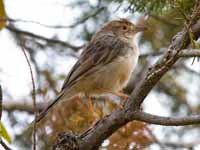
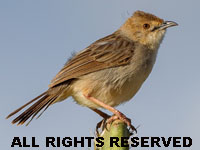
Cisticola, Bubbling Cisticola bulliens Found: Angola, DR Congo
Image by: 1) Tommy Pedersen - Angola

Cisticola,_Carruthers's Cisticola carruthersi Found: Africa
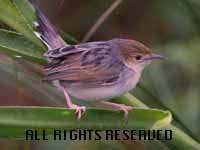

Cisticola,_Chattering Cisticola anonymus Found: Africa
Image by: 1) Seth of Rabi - Nigeria 2) Nik_Borrow - Gabon 3) Ron Hoff - Gabon

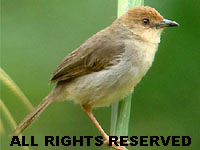

Cisticola,_Chirping Cisticola pipiens Found: southern Africa
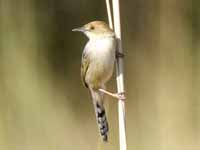
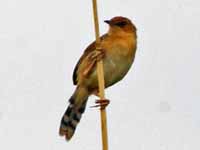
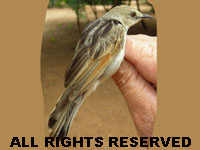
Cisticola, Chubb's Cisticola chubbi Found: Africa
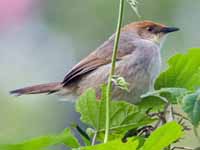

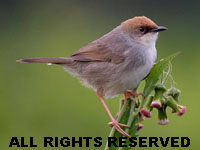
Cisticola, Churring Cisticola njombe Found: Malawi, Tanzania, Zambia.
Image by: 1)Fancesco Veronesi - Malawi 2) Dave Appleton - Malawi 3) Nik_Borrow
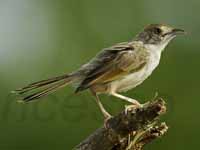
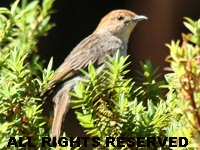
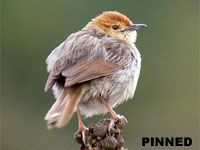
Cisticola, Cloud Cisticola textrix Found: mostly in South Africa
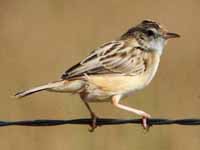
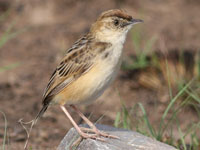
Cisticola,_Cloud-scraping also Dambo Cisticola Cisticola dambo Found: Angola, the DRC, Zambia
Image by: 1) Maans_Booysen - Angola 2) Pinned
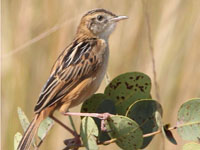
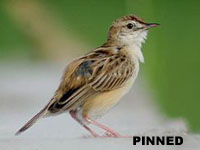
Cisticola, Croaking Cisticola natalensis Found: Africa
Image by: 1) Dick Daniels - specimen in Nairobi National Museum, Kenya 2) Dave Curtis - Kenya 3) Aaron Maizlish - Ghana 4) Joseph Mochoge - Gilgil, Kenya
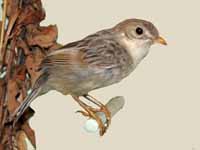
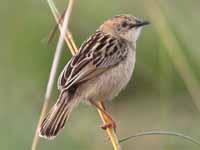
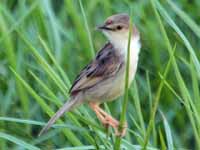
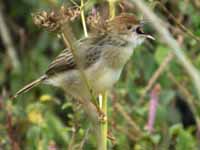
Cisticola, Desert Cisticola aridulus Found: Africa
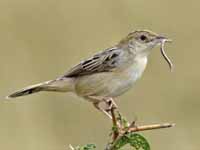
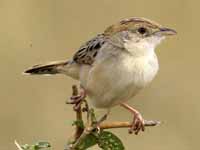

Cisticola, Dorst's Cisticola guinea Found: Africa
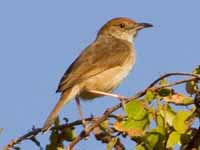
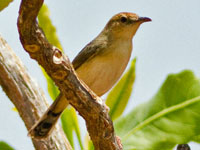
Cisticola,_Foxy Cisticola troglodytes Found: Africa
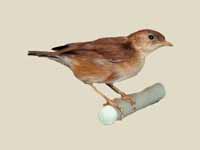
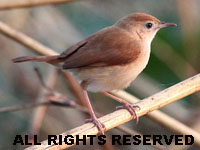

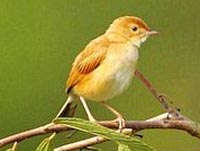
Cisticola,_Golden-headed Cisticola exilis China, India, southeast Asia, Indonesia, Malaysia, Philillipines, Australia
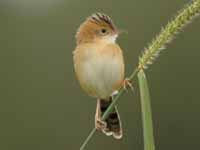
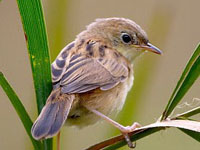

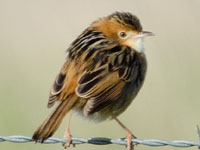
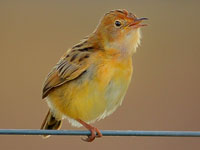
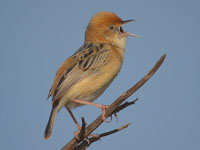
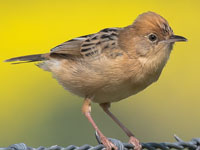
Cisticola,_Gray Cisticola rufilatus Found: Africa
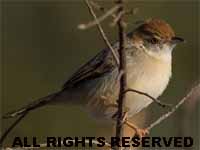
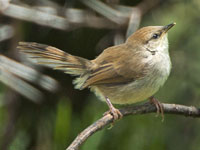
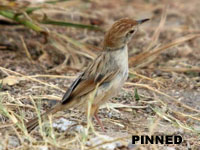
Cisticola, Hunter's Cisticola hunteri Found: Kenya, Tanzania, Uganda
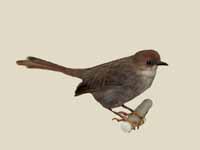
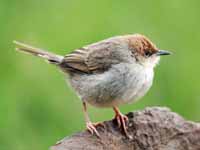
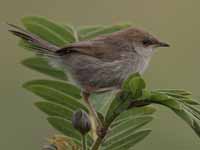
Cisticola, Lazy also Rock-loving Cisticola Cisticola aberrans Found: Africa

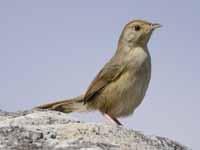
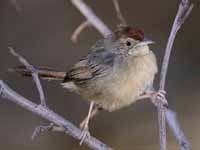
Cisticola, Levaillant's also Tinkling Cisticola Cisticola tinniens Found: Africa
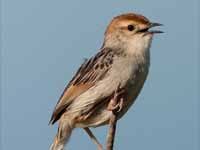
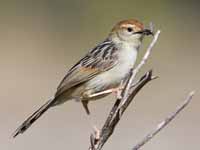

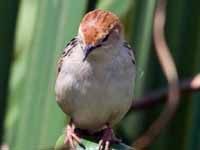

Cisticola, Madagascar Cisticola cherina Found: Madagascar, Seychelles
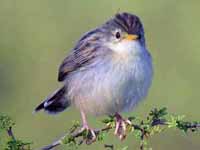
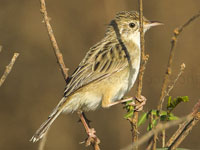
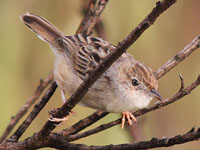
Cisticola, Pale-crowned Cisticola cinnamomeus Found: Africa
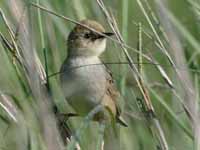

Cisticola,_Pectoral-patch Cisticola brunnescens Found: Africa
1) Identified by Jose Mochoge.

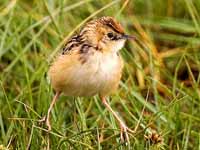
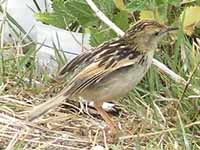
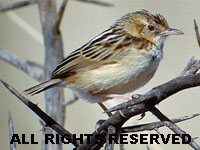
Cisticola, Piping also Neddicky Cisticola fulvicapilla Found: Africa
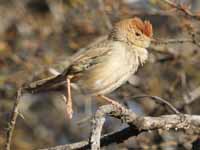
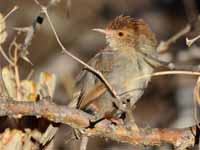
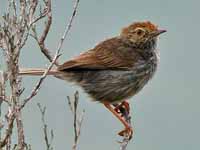
Cisticola, Rattling Cisticola chiniana Found: Africa
1) Juvenile 2) Female 3, 4, 5) Male
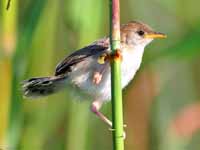
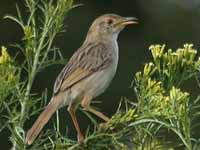
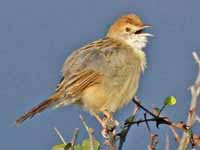
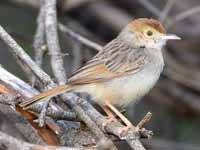
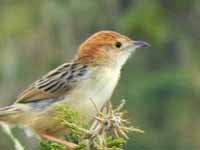
Cisticola, Red-faced Cisticola erythrops Found: Africa
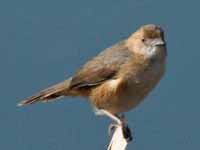
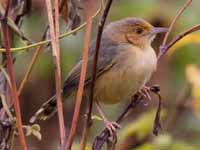
Cisticola,_Red-headed also Gray-backed Cisticola Cisticola subruficapilla Found: Angola, Namibia, South Africa
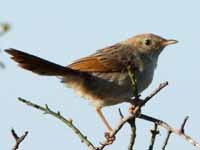
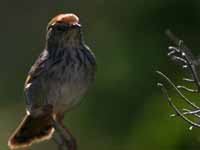
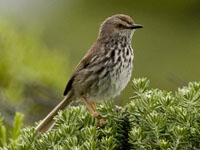
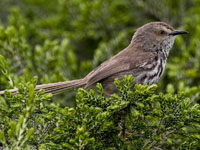
Cisticola,_Red-pate Cisticola ruficeps Found: Africa


Cisticola, Rufous Found: Africa

Cisticola, Siffling also Short-winged Cisticola Cisticola brachypterus Found: Africa
Image by: 1) Carol Foil - Kenya 2) Dave Curtis - Nairobi National Park, Kenya 3, 4, 5, 6) Dick Daniels - Kigio Wildlife Conservancy (near Gilgil), Kenya
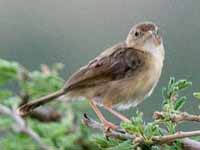
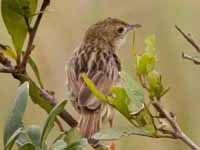




Cisticola, Singing Cisticola cantans Found: Africa
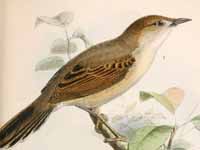
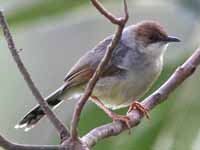
Cisticola, Stout Cisticola robustus Found: Africa
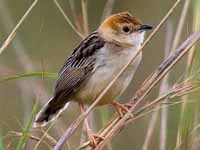
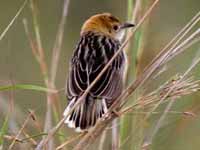
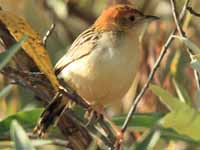
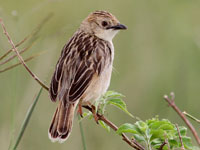
Cisticola,_Tabora also Long-tailed Cisticola Cisticola angusticauda Found: Africa
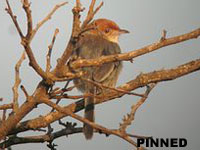
Cisticola,_Tana_River Cisticola restrictus Found: Kenya
Image by: 1) hbw.com

Cisticola, Tiny Cisticola nana Found: Africa
1, 2) Female 3) Male
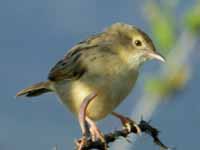
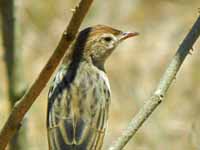
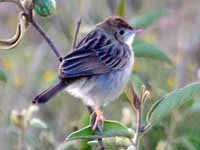
Cisticola,_Trilling Cisticola woosnami Found: Africa

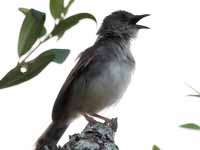
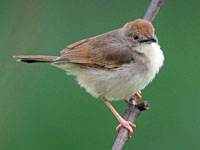
Cisticola, Wailing Cisticola lais Found: Africa
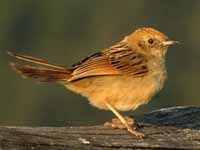

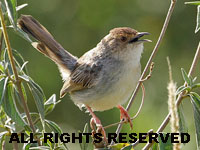
Cisticola, Whistling Cisticola lateralis Found: Africa
Image by: 1) Peter Steward - Kenya 2) John_Hamilton - Gambia
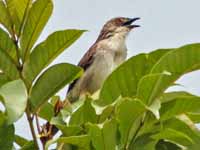
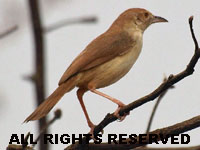
Cisticola, Winding Cisticola galactotes Found: Africa
2, 3) Tentative identification - the black line on head is problematic.
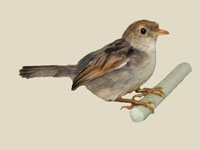


Cisticola, Wing-snapping Cisticola ayresii Found: Africa
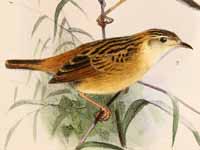
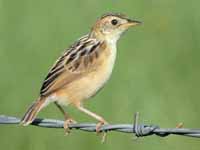




Cisticola, Zitting also Fan-tailed Cisticola Cisticola juncidis Found: Europe, Africa, Asia, Australia
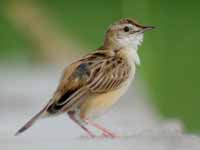

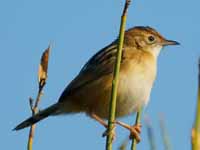
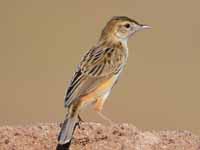
Genus Drymocichla
Warbler, Red-winged Gray Drymocichla incana Found: Africa
Image by: 1) Joseph Smit 2) Michael and Helen Cox

Genus Eminia
Warbler, Gray-capped Eminia lepida Found: Africa
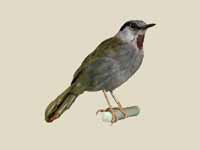
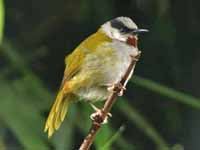
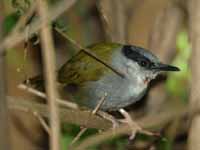
Genus Eremomela
Eremomela,_Black-necked Eremomela atricollis Found: Africa

Eremomela,_Burnt-neck Eremomela usticollis Found: Africa
Image by: 1) Joseph Smit 2) Ian White 3) Johann du Preez - South Africa
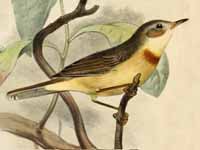
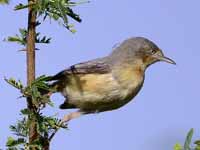
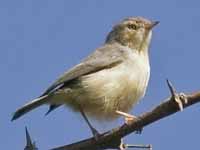
Eremomela,_Green-backed Eremomela canescens Found: tropical Africa
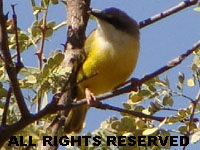
Eremomela,_Greencap also Green-capped Eremomela Eremomela scotops Found: Africa
Image by: 1) Dick Daniels - specimen in Nairobi National Museum, Kenya 2) Derek_Keats - South Africa 3) Maans_Booysen - Zimbabwe
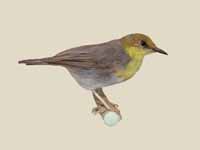

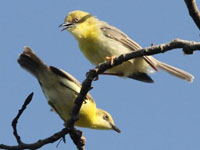
Eremomela,_Rufous-crowned Eremomela badiceps Found: Africa

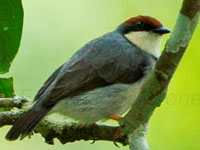
Eremomela,_Salvadori's Eremomela salvadorii Found: Angola, G `abon, Zaire, Zambia
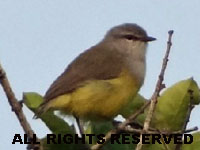
Eremomela,_Senegal Eremomela pusilla Found: equatorial Africa
Image by: 1) JV Verde - Gambia 2) Muchaxo - Gambia 3) Bruno_PORTIER
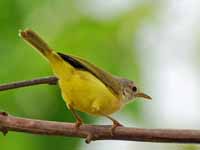
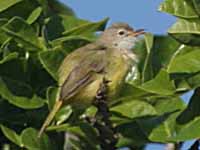
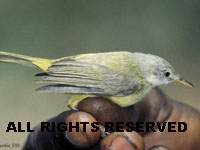
Eremomela,_Turner's Eremomela turneri Found: Africa

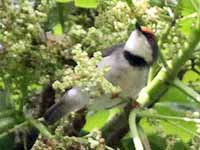
Eremomela,_Yellow-bellied Eremomela icteropygialis Found: soutn of the Sahara in Africa
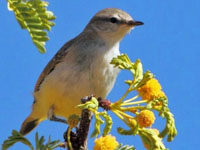
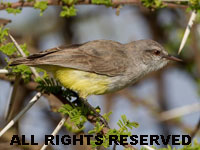
Eremomela,_Yellow-rumped also Karoo Eremomela Eremomela gregalis Found: Namibia, South Africa
Image by: 1) Dave Baddle South Africa 2) Birdsurfer - South Africa 3) Alan_Manson

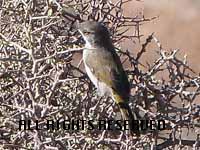
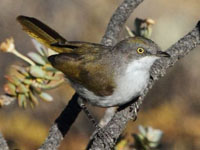
Eremomela,_Yellow-vented Eremomela flavicrissalis Found: dry savannas of Africa
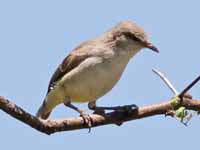
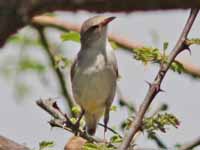
Genus Euryptila - 1 species
Warbler, Cinnamon-breasted also Kopje Warbler Euryptila subcinnamomea Found: Namibia, South Africa
Image by: 1) Alan Manson - South Africa
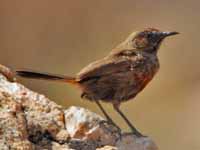
Genus Heliolais - 1 species
Warbler, Red-winged Heliolais erythropterus Found: Africa


Genus Hypergerus - 1 species
Warbler, Oriole Hypergerus atriceps Found: Africa

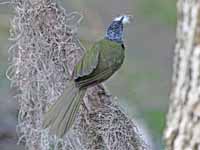
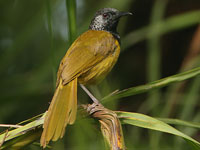
Genus Incana - 1 species
Warbler,_Socotra Incana incana Found: Socotra - off Somalia
Image by: 1) Morten Ross

Genus Malcorus - 1 species
Warbler, Rufous-eared Malcorus pectoralis Found: Africa
Image by: 1) Alastair Rae 2) Mike Richardson - South Africa
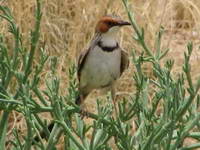
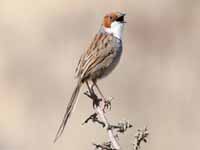
Genus Micromacronus
Warbler,_Letye_Plumed- also Visayan Minature-Babbler Micromacronus leytensis Found; Philippines
Image by: 1) Yann Muzika - Samar, Philippines

Warbler,_Mindanao_Plumed- also Mindanao Minature-Babbler Micromacronus sordidus Found; Philippines
Image by: 1)Tonji_Ramos
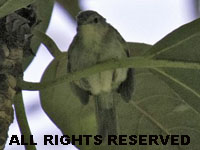
Genus Neomixis
These three African Warblers are endemic to Madagascar. The Wedge-tailed Jerry was previously considered to be part of this genus.
Jery, Common Neomixis tenella Found: Madagascar
Image by: 1) John Gerrard Keulemans 2) Ross Tsai 3, 4, 5) Dick Daniels Kirindy Forest, Madagascar
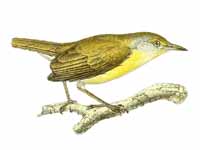




Jery, Green Neomixis viridis Found: Madagascar
Image by: 1) Laval Roy

Jery, Stipe-throated Neomixis striatigula Found: Madagascar
Image by: 1) John Gerrard Keuelmans 2) Robert Lewis 3) Bryan Smith
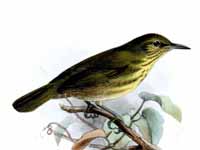


Genus Orthotomus
These warblers are usually brightly colored, with green or grey upperparts and yellow white or gray underparts. They often have chestnut on the head. Tailorbirds have short rounded wings, short tails, strong legs and long curved bills. The tail is typically held upright, like a wren. They are typically found in open woodland, scrub and gardens. They get their name from the way their nest is constructed. The edges of a large leaf are pierced and sewn together with plant fibre or spider's web to make a cradle in which the actual grass nest is built. Tailorbirds are found mainly in southeast Asia, Indonesia, Malaysia, Philippines.
Tailoerbird, Ashy Orthotomus ruficeps Found: southeast Asia, Indonesia, Malaysia, Philippines
Image by: 1) Lip Kee - Singapore 2) Melvin Yap - Singapore 3) Manjeet Singh - Malaysia
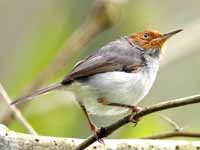
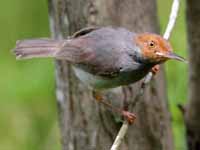

Tailorbird,_Cambodian Orthotomus chaktomuk Found: Cambodia
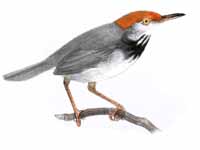
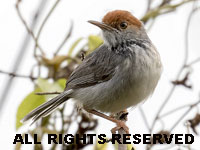

Tailorbird, Common Orthotomus sutorius Found: Asia
1, 2, 3) Male 4) Female
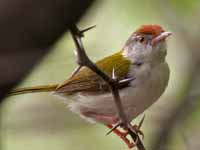
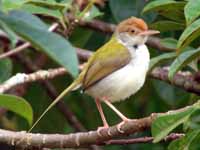
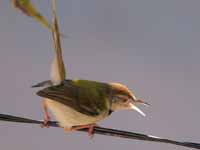
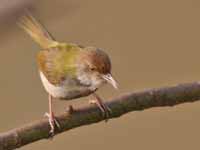
Tailorbird, Dark-necked Orthotomus atrogularis Found: Asia, Indonesia, Malaysia
Image by: 1) Lip Kee - Indonesia 2) NatureAtYourBackyard 3) Rushen - Thailand 4) Charlie Westerinen - northern Thailand
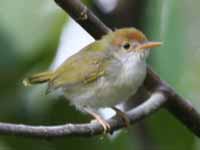
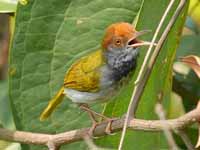
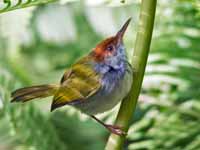
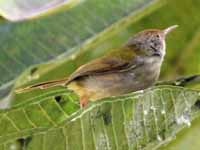
Tailorbird,_Gray-backed Orthotomus derbianus Found: Philippines
Image by: 1) Joseph Wolf 2) Neon Rosell 3) Rafael Vila

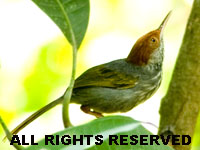

Tailorbird,_Green-backed Orthotomus chloronotus Found: Philippines
Image by: 1) Ramon J Quisumbing
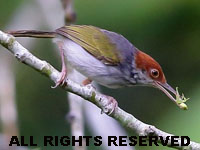
Tailorbird, Olive-backed Orthotomus sepium Found: Java and Bali in Indonesia
Image by: 1) Wade Strickland - West Java 2) laloq3 - malaysia


Tailorbird, Philippine Orthotomus castaneiceps Found: Philippines
Image by: 1) Dominic Deloso

Tailorbird, Rufous-fronted Orthotomus frontalis Found: Philippines
Image by: 1) John Gerrard Keulemans 2) Marcel Holyoak 3) Ramon_Quisumbing
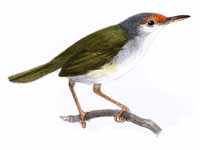
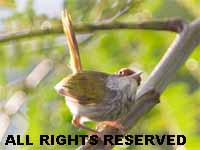

Tailorbird, Rufous-tailed Orthotomus sericeus Found: southeast Asia, Indonesia, Malaysia
mage by: 1, 2) Rackk67 Orthotomus sutorius
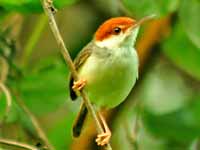
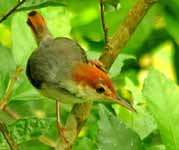
Tailorbird,_Visayan also Philippine Tailorbird Orthotomus castaneiceps Found: Philippines
Image by: 1) Jon Hornbuckle
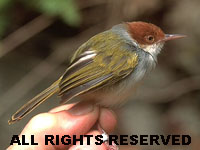
Tailorbird,_White-browed also Black-headed Tailorbird Orthotomus nigriceps Found: Philippines
Image by: 1) Ramon_Quisumbing 2) Benedict De Laender
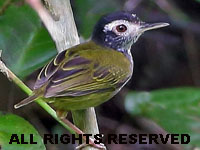
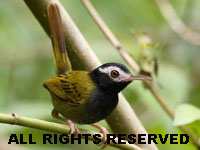
Tailorbird. White-eared Orthotomus cinereiceps Found: Philippines
Image by: 1) John Gerrard Keulemans 2) Bram Demeulemeester
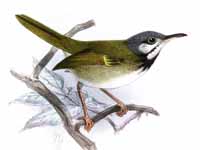

Tailorbird,_Yellow-breasted Orthotomus samarensis Found: Philippines
Image by: 1) Jon Hornbuckle 2) Patrik Jonasson
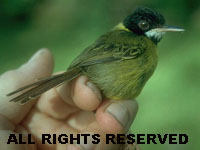

Genus Phyllolais - 1 Genus
Warbler, Buff-bellied Phyllolais pulchella Found: Africa
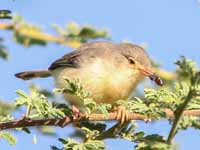
Genus Poliolais - 1 species
Warbler, White-tailed Poliolais lopezi Found: Cameroon, Equatorial Guinea, Nigeria
Image by: 1) John Gerrard Keulemans 2) Nigel Voadem - Cameroon

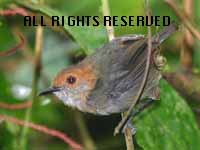
Genus Prinia
The prinias are tropical and subtropical, the roughly thirty species being divided fairly equally between Africa and Asia. They are mainly of open habitats such as long grass or scrub, in which they are not easily seen. They are mainly resident, migration being limited to local cold weather movements. Prinias have short wings but long tapering tails. They are fairly drab birds, brown or gray above (sometimes with dark streaks) and whitish below. Some species have different breeding and non-breeding plumages. The bill is a typical insectivore's, thin and slightly curved. There are approximately 25 species.
Prinia,_Ashy Prinia socialis Found: India region
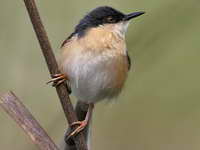
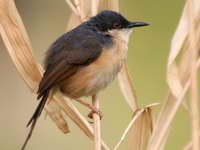
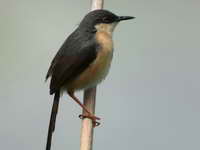
Prinia,_Banded Prinia bairdii Found: Africa
1) unrealistic eye

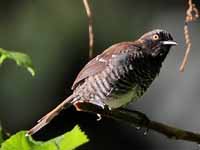
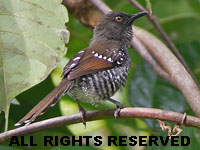
Prinia,_Bar-winged Prinia familiaris Found: Indonesia

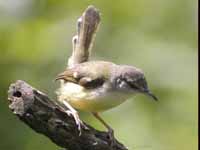
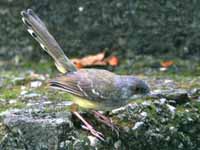
Prinia,_Black-chested Prinia flavicans Found: Africa
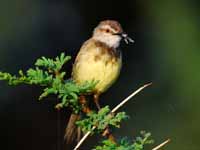

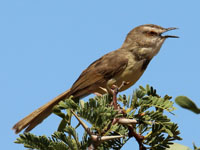
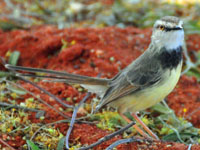
Prinia,_Black-throated Prinia atrogularis Found: eastern Himalayas
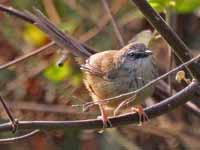
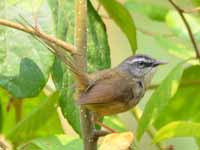

Prinia,_Brown Prinia polychroa Found: China, southeast Asia, Indonesia
Image by: 1) JJ Harrison - Thailand 2) Jan_Fischer_Rasmussen - Thailand

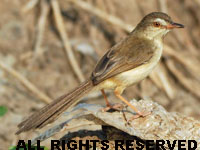
Prinia,_Drakensberg Prinia hypoxantha Found: South Africa
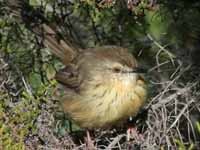
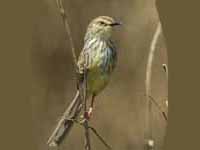
Prinia,_Graceful Prinia gracilis Found: Africa, Asia
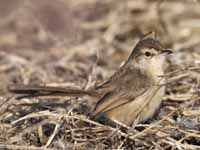
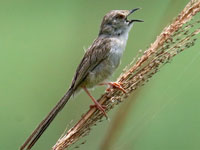
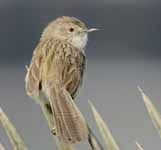
Prinia,_Gray-breasted Prinia hodgsonii Found: Asia
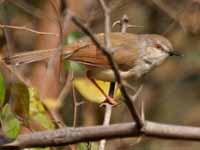
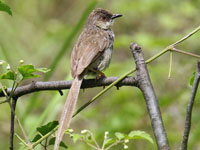
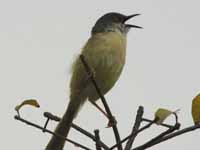
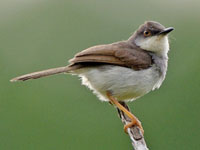

Prinia,_Gray-crowned Prinia cinereocapilla Found: Bhutan, India, Nepal
Image by: 1) Padmanav_Kundu - India
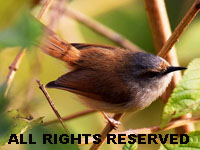
Prinia,_Hill Prinia superciliaris Found: China, southeast Asia, Indonesia, Malaysia
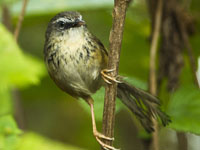
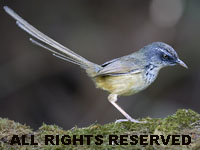
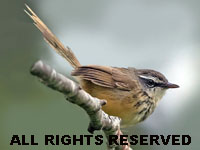
Prinia,_Jungle Prinia sylvatica Found: Indian subcontinent, Sri Lanka
1) Juvenile
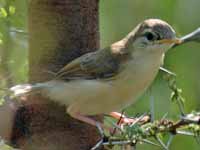
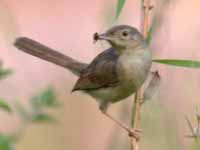
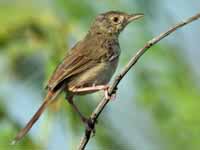
Prinia,_Karoo Prinia maculosa Found: southern Africa
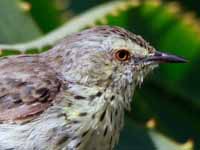
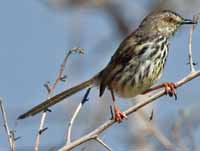
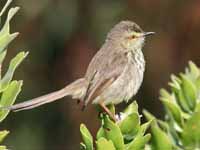
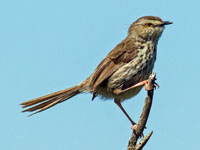
Prinia,_Namaqua Prinia substriata Found: Nambia, South Africa
Image by: 1) Maans_Booysen
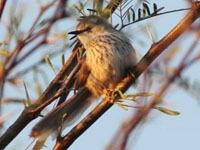
Prinia,_Pale Prinia somalica Found: Ethiopia, Kenya, Somalia, South Sudan
Image by: 1) Graham Ekins - Ethiopia 2) Francesco_Veronesi - Kenya
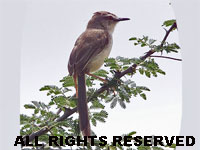
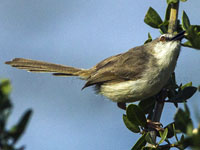
Prinia,_Plain Prinia inornata Found: Asia
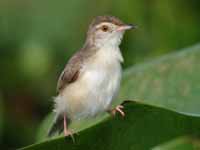
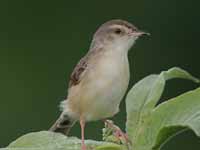
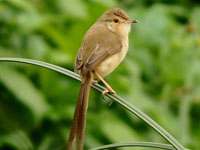
Prinia,_Red-winged Prinia erythroptera Found: Africa
Image by: 1) Michael_Andersen
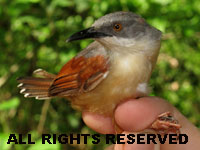
Prinia,_River Prinia fluviatilis Found: Africa
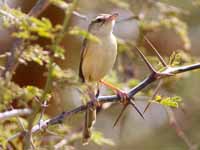

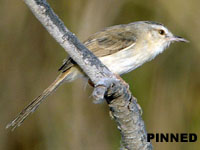
Prinia,_Roberts's Prinia robertsi Found: Mozambique, Zimbabwe
Image by: 1) Per_Holmen - Zimbabwe
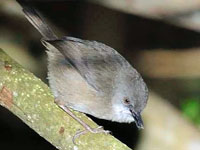
Prinia,_Rufescent Prinia rufescens Found: south Asia
Image by: 1) Ron Knight 2, 3) Vijay Ismavel

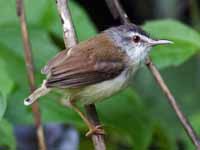

Prinia,_Rufous-fronted Prinia buchanani Found: India and Pakistan
Image by: 1) Koshy Koshy - India 2) Lip Kee - India 3) Aaron_Maizlish
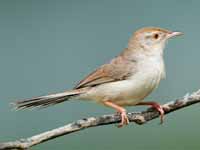
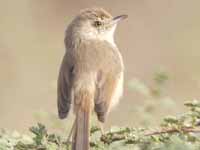
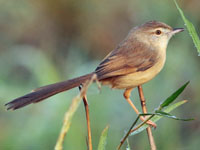
Prinia,_Rufous-vented also Long-tailed Grass-Warbler Prinia burnesii Found: Asia



Prinia,_São Tomé Prinia molleri Founds: islands off west central Africa
Image by: 1, 2) naturgucker

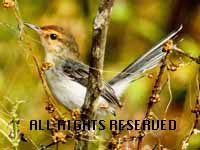
Prinia,_Striated Prinia crinigera Found: southern Asia
Image by: 1) KC Hung 2) Cheer2 - Taiwan
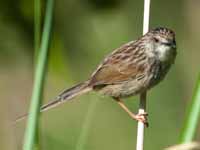

Prinia,_Swamp Prinia cinerascens Found:India, Bangladesh
Image by: 1) Ali Arsh

Prinia,_Tawny-flanked Prinia subflava Found: Africa

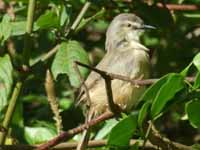
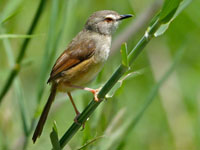
Prinia,_Yellow-bellied Prinia flaviventris Found: Asia
Image by: 1) Darren Bellerby - Hong Kong Wetland Park, Hong Kong 2) Earthshine - Hong Kong 3) Ray Cui 4) Imran_Shah - Pakistan 5) Andy_Li

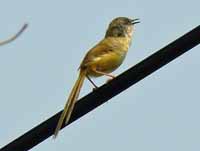
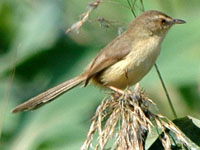
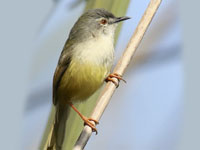
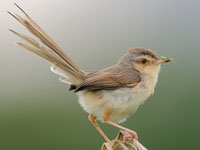
Genus Scepomycter - 1 species
Warbler,_Winifred's also Mrs Moreau's Warbler Scepomycter winifredae Found: Tanzania
Image by: 1) hbw.com

Genus Schistolais
Prinia,_Sierra_Leone Schistolais leontica Found: Ivory Coast, Guinea, Liberia, Sierra Leone
Image by: 1, 2) Ben Phalan - Liberia

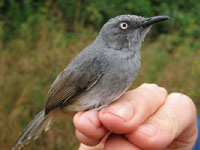
Prinia,_White-chinned Schistolais leucopogon Found: Africa
1) Peter Steward - Kenya 2) Hans Olofsson
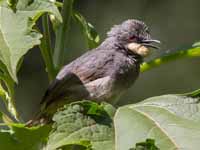

Genus Spiloptila - 1 species
Longtail, Cricket also Cricket Warbler Spiloptila clamans Found:Africa
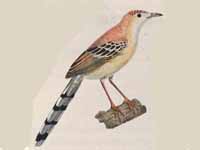

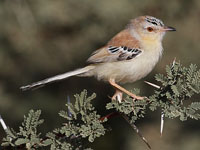
Genus Urolais - 1 species
Longtail,_Green Urolais epichlorus Found: Cameroon, Equatorial Guinea, Nigeria.
1) John Gerrard Keulemans 2) Christian_Artuso - Cameroon
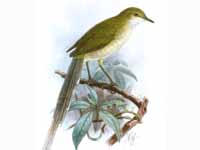
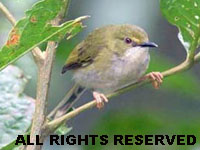
Genus Urorhipis - 1 species
Warbler, Red-fronted Urorhipis rufifrons Found: Africa
Image by: 1) Peter Steward - Kenya

Genus Bernieria - 1 species
Bernieria, Long-billed Bernieria madagascariensis Found: Madagascar
The Long-billed Bernieria has green upperparts; long bill. It is found in moist warm lowland forests.
Image by: 1) Daniel Guip 2) Dick Daniels - Madagascar 3) Robert Lewis 


Genus Crossleyia - 1 species
Yellowbrow, Madagascar also Yellow-browed Oxylabes Crossleyia xanthophrys Found: Madagascar
Image by: 1) nlb birder

Genus Cryptosylvicola - 1 species
Warbler, Cryptic Cryptosylvicola randrianasoloi Found: Madagascar
Image by: 1) Marcus Lilje

Genus Hartertula - 1 species
Jery, Wedge-tailed Hartertula flavoviridis Found: east Madagascar
The Wedge-tailed Jery has olive upperparts; yellow throat and upper-breast.
Image by: 1) Ross Tsai 2) Kristian Svensson

Genus Oxylabes - 1 species
Oxylabes, White-throated Oxylabes madagascariensis Found: Madagascar
Image by: 1) Joseph Smit 2) Paul French


Genus Randia - 1 species
Warbler, Rand's Randia pseudozosterops Found: Madagascar
Image by: 1) foto lulu

Genus Thamnornis - 1 species
Thamnornis Thamnornis chloropetoides Found: Madagascar
Image by: 1) Ross Tsai 2) Kristian Sevensson


Genus Xanthomixis
Tetraka, Appert's Xanthomixis apperti Found: southwest Madagascar
The Appert's Tetraka has green upperparts; darker wings; gray head; white throat; orange underparts; pink bill; gray legs. Found in shrubs or on the ground.
Image by: 1) Laval Roy 2) Marcus Lilje

Tetrala,_Dusky Xanthomixis tenebrosa Found: Madagascar
Image by: 1) hbw.com

Tetraka, Gray-crowned Xanthomixis cinereiceps Found: Eastern and northern Madagascar
The Gray-crowned Tetraka has green upperparts; gray crown, nape; white eye-ring; pale underparts.
Image by: 1) Paul Ellis
Tetraka, Spectacled Xanthomixis zosterops Found: Madagascar
The Spectacled Tetraka has green upperparts; pale eye-ring; yellow throat.
Image by: 1) David Cook 2) Kristian Sevensson 

The Cisticolidae family of small passerine birds is a group of about 110 warblers found mainly in warmer southern regions of the Old World. This family probably originated in Africa, which has the majority of species, but there are representatives of the family across tropical Asia into Australasia, and one species, the Zitting cisticola, even breeds in Europe.
These are generally very small birds of drab brown or grey appearance found in open country such as grassland or scrub. They are often difficult to see and many species are similar in appearance, so the song is often the best identification guide. These are insectivorous birds which nest low in vegetation.
Genus Apalis
They are found in forest, woodlands and scrub across most parts of sub-Saharan Africa. They are slender birds with long tails and have a slender bill for catching insects. They are typically brown, grey or green above and several species have brightly coloured underparts. Males and females are usually similar in appearance.
Apalis,_Bamenda Apalis bamendae Found: Cameroon
Image by: 1) Nigel Voaden 2) Marcel Holyoak


Apalis,_Bar-throated Apalis thoracica Found: Africa
Depending on the subspecies, the upperparts of the Bar-throated Apalis can be gray or green while the underparts are white or pale yellow. All forms have a narrow black band across the breast, white outer tail-feathers and a pale eye. The black bill is fairly long and slender and is slightly curved. Females are similar to males but have a narrower breastband.
Similar to: Rudd's Apalis. Bar-throated Apalis has pale eye; Rudd's Apalis has black eye.
Image by: 1) Brian Ralphs - South Africa 2) Derek_Keats 3) Arno_MeintjesSimilar to: Rudd's Apalis. Bar-throated Apalis has pale eye; Rudd's Apalis has black eye.



Apalis,_Black-capped Apalis nigriceps Found: Africa
Image by: 1) Henrik Gronvold 2) Francesco Veronesi - Ghana
1) Male - top; female - bottom


Apalis,_Black-collared Apalis pulchra Found: Africa
The Black-collared Apalis has white underparts with a wide black breast-band and rufous flanks.
Image by: 1) Nick Athanas - Kenya 2) John Gerrard Keulemans 3) Mike Comber - Kenya


Apalis,_Black-faced also Mountain-masked Apalis Apalis personata Found: Africa
Image by: 1) Tom Tarrant - Uganda 2) Lip Kee - Rwanda


Apalis,_Black-headed Apalis melanocephala Found: Africa
The Black-headed Apalis has dark upperparts; white underparts.
Image by: 1) Francesco Veronesi - Malawi 2) Nik_Borrow - Tanzania

Apalis,_Black-throated Apalis jacksoni Found: Africa
Image by: 1, 2) Dave Curtis - Kenya 3, 4) Nick Athanas - Kenya




Apalis,_Brown-headed Apalis alticola Found: central and east Africa
The Brown-headed Apalis has gray-brown upperparts becoming chocolate-brown on crown and cheeks; pale orange eyes; whitish underparts; pinkish legs.
Similar to: Gray Apalis. The Gray Apalis has gray-brown head; dark eyes.Brown-headed Apalis has brown hear, pale orange eyes.
Image by: 1) Per_Holmen - Tanzania 2) Nik_Borrow 3) Louis_Andre_Hansen 4) Barbara Lawrence - TanzaniSimilar to: Gray Apalis. The Gray Apalis has gray-brown head; dark eyes.Brown-headed Apalis has brown hear, pale orange eyes.




Apalis,_Buff-throated Apalis rufogularis Found: Africa
The Buff-throated Apalis is found in in Angola, Benin, Burundi, Cameroon, Central African Republic, Republic of the Congo, Democratic Republic of the Congo, Equatorial Guinea, Gabon, Kenya, Nigeria, Rwanda, South Sudan, Tanzania, Uganda, and Zambia.
Image by: 1) Per_Holmen - Tanzania 2) Marc_LANGUY - Central African Republic 3) John_Caddick1, 2) Female 3) Male



Apalis,_Chapin's Apalis chapini Found: Malawi, Tanzania, Zambia
Image by: 1)Peter_Steward 2) Per_Holmen - Tanzania 3) Louis_Andre_Hansen - Tanzania



Apalis,_Chestnut-throated Apalis porphyrolaema Found: Africa
The Chestnut-throated Apalis has a chestnut (rufos) throat.
Image by: 1) Tom Tarrant 2) Francesco Veronesi - Uganda

Apalis,_Chirinda Apalis chirindensis Found: Zimbabwe, Mozambique.
The Chirinda Apalis has gray upperparts, crown; whitish underparts, throat.
Image by: 1) hbw.com 2) Peter Ginn - Zimbabwe

Apalis,_Gosling's Apalis goslingi Found: Africa
The Gosling's Apalis is found in Angola, Cameroon, Central African Republic, Republic of the Congo, Democratic Republic of the Congo, and Gabon.
Image by: 1, 2) Marc_LANGUY - Cameroon 3) Steve Lewis


Apalis,_Gray Apalis cinerea Found: Africa
The Gray Apalis has gray upperparts; white underparts.
Similar to: Brown-headed Apalis. The Gray Apalis has gray-brown head; dark eyes.Brown-headed Apalis has brown hear, pale orange eyes.
Image by: 1) Peter Steward - Kenya 2, 3) Carol Foil - Kenya 4) Nick Athanas - KenyaSimilar to: Brown-headed Apalis. The Gray Apalis has gray-brown head; dark eyes.Brown-headed Apalis has brown hear, pale orange eyes.




Apalis,_Karamoja Apalis karamojae Found: Tanzania, Uganda, Kenya
Image by: 1) Steve Popple - Tanzania 2) Per Holmen 3) Seronera_MikeGraham



Apalis,_Kungwe Apalis argentea Found: Burundi, Democratic Republic of the Congo, Rwanda, Tanzania.
The Kungwe Apalis was previously considered a subspecies of the Buff-throated Apalis. The Kungwe Apalis has paler gray upperparts.
Image by: 1) hbw.com
Apalis,_Masked also Lowland Masked Apalis Apalis binotata Found: Africa
Image by: 1) Dick Daniels - specimen in Nairobi National Museum, Kenya 2) Nik Borrow


Apalis,_Rudd's Apalis ruddi Found: Malawi, Mozambique, South Africa
The Bar-throated has gray or green upperparts; white or pale yellow underparts; narrow black band across the breast; black eye. The black bill is fairly long and slender and is slightly curved. Females are similar to males but have a narrower breastband.
Similar to: Bar-throated Apalis. Bar-throated Apalis has pale eye; Rudd's Apalis has black eye.
Image by: 1) Francesco Veronesi 2, 3) Derek_KeatsSimilar to: Bar-throated Apalis. Bar-throated Apalis has pale eye; Rudd's Apalis has black eye.



Apalis,_Ruwenzori also Collared Apalis Apalis ruwenzorii Found: Africa
Image by: 1) Marcell Claassen - Rwanda

Apalis,_Sharpe's Apalis sharpii Found: Côte d'Ivoire, Ghana, Guinea, Liberia, Sierra Leone.
The Sharpe's Apalis has gray upperparts; paler gray underparts.
Image by: 1) Francesco_Veronesi - Ghana 2) Nik Borrow - Ghana 3) Mike Barth 4) Paul_Matson - Ghana



Apalis,_White-winged Apalis chariessa Found: Kenya, Malawi, Mozambique, Tanzania.
Image by: 1) Dave_Montreuil 2) Margaret_Westrop


Apalis,_Yellow-breasted Apalis flavida Found: Africa
The Yellow-breasted Apalis has gray head; may be black breast patch; white throat; yellowish upper-breast.ß
Image by: 1) Steve Garvie - Abuko, The Gambia 2) Darren
Bellerby - Crater Lake, Naivasha, Kenya 3, 4) Dick Daniels - Masai Mara 5) Nick Athanas - Kenya 6) Derek_Keats - South Africa





Genus Artisornis
Tailorbird,_African also Red-capped Forest-Warbler Artisornis metopias Found: Mozambique, Tanzania
Image by: 1) Per_Holmen 2) Pinned 3) Pinned



Tailorbird,_Longbilled Artisornis moreaui Found: Mozambique, Tanzania
Image by: ) Per Holmen 2) Markus_Lilje


Genus Bathmocercus
Warbler, Black-capped Rufous- also Black-headed Rufous-Warbler Bathmocercus cerviniventris Found: Africa
Image by: 1) Joseph Smit

Warbler, Black-faced Rufous Bathmocercus rufus Found: Africa
The male Black-faced Warbler has rufous upperparts, rear of head; black face. Female has olive-gray upperparts, rear of head; black face.
Image by: 1) Lee Hunter - Uganda
Genus Calamonastes
Warbler, Barred Wren- Calamonastes fasciolatus Found: southern Africa
Image by: 1) Dick Daniels - specimen in Nairobi National Museum, Kenya 2) Ian White


Warbler, Gray Wren Calamonastes simplex Found: Africa
The Grey Wern-Warbler is dark brownish-gray with inconspicuous barred markings. The tail is black and the eye red. It is more likely to be heard than seen though there may be an occasional glimpse of its tail which wags up and down as it forages. Its sharp call is rather like two stones striking each other.
Image by: 1) C. E. Lodge 2) Carol Foil - Samburu
District, Kenya

Warbler, Miombo Wren- also Stirlings Wren-Warbler Calamonastes undosus Found: Africa
Image by: 1) Nigel Voaden - Congo 2) Dian Derksen - Botswana
2) Stirlings Wren-Warbler: Calamonastes (undosus) stierlingi


Genus Camaroptera
Camaroptera,_Gray-backed Camaroptera brevicaudata Found: Africa
The Gray-backed Camaroptera has gray upperparts and a gray short cocked tail. The wings are olive and the underparts whitish grey.
Sometimes considered same species as Green-backed Camaroptera.
Image by: 1) Derek_Keats - South Africa 2) Carol Foil - Kenya Sometimes considered same species as Green-backed Camaroptera.


Camaroptera,_Green-backed Camaroptera brachyura Found: Africa
Sometimes considered same species as Gray-backed
Camaroptera.
Image by: 1) Dick Daniels - specimen in Nairobi National Museum, Kenya 2) Jerry Oldenettel - Namibia
3) Francesco Veronesi - Malawi 4) Ian White 



Camaroptera_ Olive-green Camaroptera chloronota Found: Africa
The Olive-green Camaroptera is found in Benin, Cameroon, Central African Republic, Republic of the Congo, Democratic Republic of the Congo, Ivory Coast, Equatorial Guinea, Gabon, Gambia, Ghana, Guinea, Kenya, Liberia, Mali, Nigeria, Rwanda, Senegal, Sierra Leone, South Sudan, Tanzania, Togo, and Uganda.
Image by: 1) Dave Curtis - Kenya 2) Solomaverick

Camaroptera,_Yellow-browed Camaroptera superciliaris Found: Africa
The Yellow-browed Camaroptera is found ins found in Angola, Benin, Cameroon, Central African Republic, Republic of the Congo, Democratic Republic of the Congo, Ivory Coast, Equatorial Guinea, Gabon, Ghana, Guinea, Liberia, Nigeria, Sierra Leone, Togo, and Uganda..
Image by: 1) Marcel Holyoak - Cameroon 2) Francesco_Veronesi - Ghana

Genus Cisticola
Because of their small size and brown plumage, they are more easily heard than seen.
The female builds a discreet nest deep in the grasses, often binding living leaves into the soft fabric of felted plant down, cobweb, and grass. The following refernces have been used for some descriptions:
Birds of Kenya and Northern Tanzania by Zimmerman, Turner and Pearson.
Bird of Southern Africa by Newman.
Cisticola, Aberdare Cisticola aberdare Found: Kenya
The Stout Cisticola has a stout body; buffy-gray upperparts with dark streaks; streaked rufous nape; reddish-brown crown; whitish underparts. Male much larger than female.
Similar to: Stout Cisticola. Stout Cisticola has plain nape and is found below 2500 meters; Aberdare Cisticola has streaked nape and is found above 2300 meters.
Image by:
1) Dave Curtis 2) Peter Steward 3) PinnedSimilar to: Stout Cisticola. Stout Cisticola has plain nape and is found below 2500 meters; Aberdare Cisticola has streaked nape and is found above 2300 meters.



Cisticola, Ashy Cisticola cinereolus Found: Africa
The Ashy Cisticoal has grayish-brown upperparts with dark streaks; brown crown; pale buffy underparts.
Image by:
1) Frederic Salein - Kenya 2) Mark Piazzi - Ethiopia

Cisticola, Black-backed Cisticola eximius Found: Africa
The Black-backed Cisticola has black back with white stripes; chestnt crown or black crown with white stripes; reddish or reddish brown rump. The chestnut crowned subspecies has a shorter tail.
Image by: 1, 2, 3) Joseph Mochoge - Gilgil, Kenya 4) Dave Curtis - Kenya1, 2) Female 3) Male




Cisticola,_Black-lored Cisticola nigriloris Found: Malawi, Tanzania, Zambia
Image by: 1) Dave Appleton - Malawi 2) Per_Holmen - Tanzaniaq


Cisticola,_Black-tailed also Slender-tailed Cisticola Cisticola melanurus Found: Angola, D.R. Congo
The Black-tailed Cisticola's natural habitat is dry savanna and canopy of smaller trees and forages in pairs for insects.
Image by: 1) Henrik Gronvold 2, 3) Michael_Mills


Cisticola, Boran Cisticola bodessa Found: Eritrea, Ethiopia, Kenya, South Sudan
The Wailing Cisticola has gray back with dark stripes; pale brown crown; paler rufous underparts; rufous wing edges.
Similar to: Wailing Cisticola. Wailing Cisticola has more rufous crown than Boran Cisticola.
Image by: 1, 2) Carol Foil - Kenya 3) Paul van Giersbergen - EthiopiaSimilar to: Wailing Cisticola. Wailing Cisticola has more rufous crown than Boran Cisticola.



Cisticola, Bubbling Cisticola bulliens Found: Angola, DR Congo
Image by: 1) Tommy Pedersen - Angola

Cisticola,_Carruthers's Cisticola carruthersi Found: Africa
The Carruthers's Cisticola has heavily streaked back; reddish-brown head; some brown on wings; call similar to winding of a clock.
Similar to: Winding Cisticola. Winding Cisticola has redder head than Carruthers's Cisticola. Carruthers's Cisticola has no red on wings.
Image by:
1) Hans Oloffson - Uganda 2) Brendan_Ryan - UgandaSimilar to: Winding Cisticola. Winding Cisticola has redder head than Carruthers's Cisticola. Carruthers's Cisticola has no red on wings.


Cisticola,_Chattering Cisticola anonymus Found: Africa
Image by: 1) Seth of Rabi - Nigeria 2) Nik_Borrow - Gabon 3) Ron Hoff - Gabon



Cisticola,_Chirping Cisticola pipiens Found: southern Africa
The Chirping Cisticol is found in d in Angola, Botswana, Burundi, Democratic Republic of the Congo, Namibia, Tanzania, Zambia, and Zimbabwe.
Image by: 1) Lip Kee - Botswana 2) Ron Knight - Botswana 3) Mark_Paxton - Namibia


Cisticola, Chubb's Cisticola chubbi Found: Africa
The Chubb's Cisticola has brown upperparts; rufous crown; rufousish nape; off white underparts.
Image by:
1) Peter Steward - Kenya 2) Dave Curtis - Kenya 3) naturgucker.de


Cisticola, Churring Cisticola njombe Found: Malawi, Tanzania, Zambia.
Image by: 1)Fancesco Veronesi - Malawi 2) Dave Appleton - Malawi 3) Nik_Borrow



Cisticola, Cloud Cisticola textrix Found: mostly in South Africa
The Cloud Cisticola has brown upperparts with streaking; whitish underparts; broad tail which is frequently flicked. Breeding male has darker upperparts than nonbreeding male or female..
Similar to: Cloud Cisticola, Desert Cisticola, Wing-snapping Cisticola, Zitting Cisticola. These Cisticolas are difficult to identify by plumage. Cloud Cisticola male call is see-see-see-see-chick-chick-chick or just chick repeated many times; does not wing-snap. Desert Cisticola call is high pitch zink-zink-zink... or tuc tuc tuc tuc wee; wing-snaps. Wing-snapping Cisticola male call is soo-see-see-see or ticka-ticka-ticka ..; does violent wing-snapping. Zitting Cisticola male calll is zit-zit-zit ...; does not wing-snap. (From Birds of Southern Africa by Kenneth Newman.)
Image by: 1) Alan Manson 2) Derek_KeatsSimilar to: Cloud Cisticola, Desert Cisticola, Wing-snapping Cisticola, Zitting Cisticola. These Cisticolas are difficult to identify by plumage. Cloud Cisticola male call is see-see-see-see-chick-chick-chick or just chick repeated many times; does not wing-snap. Desert Cisticola call is high pitch zink-zink-zink... or tuc tuc tuc tuc wee; wing-snaps. Wing-snapping Cisticola male call is soo-see-see-see or ticka-ticka-ticka ..; does violent wing-snapping. Zitting Cisticola male calll is zit-zit-zit ...; does not wing-snap. (From Birds of Southern Africa by Kenneth Newman.)


Cisticola,_Cloud-scraping also Dambo Cisticola Cisticola dambo Found: Angola, the DRC, Zambia
Image by: 1) Maans_Booysen - Angola 2) Pinned


Cisticola, Croaking Cisticola natalensis Found: Africa
Image by: 1) Dick Daniels - specimen in Nairobi National Museum, Kenya 2) Dave Curtis - Kenya 3) Aaron Maizlish - Ghana 4) Joseph Mochoge - Gilgil, Kenya




Cisticola, Desert Cisticola aridulus Found: Africa
The Desert Cisticola has brown upperparts with streaking; whitish underparts; broad tail which is frequently flicked. Breeding male has darker upperparts than nonbreeding male or female..
Similar to: Cloud Cisticola, Desert Cisticola, Wing-snapping Cisticola, Zitting Cisticola. These Cisticolas are difficult to identify by plumage. Cloud Cisticola male call is see-see-see-see-chick-chick-chick or just chick repeated many times; does not wing-snap. Desert Cisticola call is high pitch zink-zink-zink... or tuc tuc tuc tuc wee; wing-snaps. Wing-snapping Cisticola male call is soo-see-see-see or ticka-ticka-ticka ..; does violent wing-snapping. Zitting Cisticola male calll is zit-zit-zit ...; does not wing-snap. (From Birds of Southern Africa by Kenneth Newman.)
Image by: 1, 2) Lip Kee - Kenya 3) Ian White - BotswanaSimilar to: Cloud Cisticola, Desert Cisticola, Wing-snapping Cisticola, Zitting Cisticola. These Cisticolas are difficult to identify by plumage. Cloud Cisticola male call is see-see-see-see-chick-chick-chick or just chick repeated many times; does not wing-snap. Desert Cisticola call is high pitch zink-zink-zink... or tuc tuc tuc tuc wee; wing-snaps. Wing-snapping Cisticola male call is soo-see-see-see or ticka-ticka-ticka ..; does violent wing-snapping. Zitting Cisticola male calll is zit-zit-zit ...; does not wing-snap. (From Birds of Southern Africa by Kenneth Newman.)



Cisticola, Dorst's Cisticola guinea Found: Africa
The Dorst's Cisticola has been considered a subspecies of the Red-pate Cisticola.
Image by: 1, 2) Ron Knight - Cameroon

Cisticola,_Foxy Cisticola troglodytes Found: Africa
The Foxy Cisticola has rufous upperparts; buffy underparts; pale eye-ring with faint supercilium.
Image by: 1) Dick Daniels - specimen in Nairobi National Museum, Kenya 2) Raphaël Jordan - Ethiopia 3) Thomas_Varto_Nielsen - Ethiopia 4) Francesco Veronesi - Uganda 



Cisticola,_Golden-headed Cisticola exilis China, India, southeast Asia, Indonesia, Malaysia, Philillipines, Australia
The Golden-headed Cisticola is very similar in appearance to the Zitting Cisticola — however, in the breeding season males acquire a breeding plumage in which their head, throat and breast are a bright golden-orange colour, and their tails become shorter than in winter-plumage.
Image by: 1) Aviceda - Queensland, Australia 2) Shyamal 3) Geoff_Whalan 4) Nick_Talbot 5, 6) David_Jenkins 7) birdsaspoetry - Australia






Cisticola,_Gray Cisticola rufilatus Found: Africa
The Gray Cisticola and Levaillant's Cisticola are both sometimes know as a Tinkling Cisticola. This is of course can be confusing!
Image by: 1) Jeremy Smith- Zimbabwe 2) Francesco_Veronesi - Kenya 3) Pinned


Cisticola, Hunter's Cisticola hunteri Found: Kenya, Tanzania, Uganda
The Hunter's Cisticola has brown upperparts with relatively faint streaking; black lores; grayish underparts.
Image by: 1) Dick Daniels - specimen in Nairobi National Museum, Kenya 2) Peter Steward - Kenya 3) Steve Garvie - Kenya


Cisticola, Lazy also Rock-loving Cisticola Cisticola aberrans Found: Africa
The Rock-loving Cisticola, Cisticola aberrans emini, is sometimes considered a seperate species Cisticola emini.
Image by: 1) Alan Manson - South Africa 2, 3) Ian White - South Africa


Cisticola, Levaillant's also Tinkling Cisticola Cisticola tinniens Found: Africa
Levaillant's Cisticola is a dull-coloured bird with a longish tail and a reddish cap. The upperparts of the breeding adult are gray, heavily streaked with black, and with a rufous panel in the folded wing The supercilium, face and underparts are buffy white and the tail is russet brow. The short straight bill is blackish-brown with a pinkish base, and the feet and legs are pinkish-brown. The eye is light brown. Non-breeding adults are browner-backed,
The Gray Cisticola and Levaillant's Cisticola are both sometimes know as a Tinkling Cisticola. This is of course can be confusing!
Image by: 1, 2) Craig Adam - South Africa 3) Dick Daniels - Kruger National Park, South Africa 4, 5) Carol Foil - KenyaThe Gray Cisticola and Levaillant's Cisticola are both sometimes know as a Tinkling Cisticola. This is of course can be confusing!





Cisticola, Madagascar Cisticola cherina Found: Madagascar, Seychelles
The Madagascar Cisticola has brown or gray with streaks upperparts, wings, head; pale undersides.
Image by: 1) Andy Bunting 2) Francesco_Veronesi 3) Amy_McAndrews


Cisticola, Pale-crowned Cisticola cinnamomeus Found: Africa
The Pale-crowned Cisticola used to be considered a subspecies of the Pectora-patch Cisticola. It is found in Africa from eastern South Africa to Gabon and Tanzania.
Image by:
1) Alan Manson - South Africa 2) Yolandé Oelsen

Cisticola,_Pectoral-patch Cisticola brunnescens Found: Africa
The Pectoral-patch Cisticolar usually has a pectoral (shoulder) patch, but it may be lacking. It has black back with white streaks; short tail.
Image by: 1) Dick Daniels - Nairobi National Park 2) Francesco Veronesi - Kenya 3) Brian Butcher - Ethiopia 4) Nik_Borrow - Ethiopia1) Identified by Jose Mochoge.




Cisticola, Piping also Neddicky Cisticola fulvicapilla Found: Africa
The Piping Cisticola has plain brown upperparts; rufous cap; whitish or blue-gray underparts Call is chirir- chirri-chirri-chirri in rainny season or ticki-ticki-ticki-ticki when alarmed. (From Birds of Southern Africa by Kenneth Newman.)
Image by:
1) Derek Keats 2) Ian White 3) Crawford


Cisticola, Rattling Cisticola chiniana Found: Africa
The Rattling Cisticola has a streaked back; rufous crown, wing edges; whitish lores
Image by: 1, 4) Ian White 2) Alan Manson 3) Jerry OLdenettel - Botswana 5) Joseph Mochoge - Gilgil, Kenya1) Juvenile 2) Female 3, 4, 5) Male





Cisticola, Red-faced Cisticola erythrops Found: Africa
The Red-faced Cisticola has greenish-gray upperparts with paler nape; reddish face; pale buffy underparts with rufous tinge.
Image by:
1) Alan Manson 2) Peter Steward

Cisticola,_Red-headed also Gray-backed Cisticola Cisticola subruficapilla Found: Angola, Namibia, South Africa
The Red-headed Cisticola has gray or brown back; buff or grayish-white underparts; reddish head with dark rufous crown.
Image by:
1) Alan Manson - South Africa 2) Blake Matheson - South Africa 3, 4) Pixlab.co.za Sportphoto.co.za



Cisticola,_Red-pate Cisticola ruficeps Found: Africa
The Dorst's Cisticola has been considered a subspecies of the Red-pate Cisticola.
Image by: 1) Ron Knight - Cameroon 2) Paul_van_Giersbergen

Cisticola, Rufous Found: Africa
The Rufous Cisticola is found in Burkina Faso, Cameroon, Central African Republic, Chad, Gambia, Ghana, Guinea, Mali, Nigeria, Senegal, Sierra Leone, and Togo.
Image by: 1) Nigel Voaden
Cisticola, Siffling also Short-winged Cisticola Cisticola brachypterus Found: Africa
Image by: 1) Carol Foil - Kenya 2) Dave Curtis - Nairobi National Park, Kenya 3, 4, 5, 6) Dick Daniels - Kigio Wildlife Conservancy (near Gilgil), Kenya






Cisticola, Singing Cisticola cantans Found: Africa
The Singing Cisticola has gray-brown upperparts; dull rufous crown, wing edges.
Image by:
1) John Gerrard Keulemans 2) Dave Curtis

Cisticola, Stout Cisticola robustus Found: Africa
The Stout Cisticola has a stout body; buffy-gray upperparts with dark streaks; rufous nape; reddish-brown crown; short tail; whitish underparts. Male much larger than female.
Similar to: Aberdare Cisticola. Stout Cisticola has plain nape and is found below 2500 meters; Aberdare Cisticola has streaked nape and is found above 2300 meters.
Image by: 1, 2) Carol Foil - Kenya 3) Wifflepeg - Kenya 4) Dave_CurtisSimilar to: Aberdare Cisticola. Stout Cisticola has plain nape and is found below 2500 meters; Aberdare Cisticola has streaked nape and is found above 2300 meters.




Cisticola,_Tabora also Long-tailed Cisticola Cisticola angusticauda Found: Africa
The Tabora Cisticola is found in the DRC, Kenya, Malawi, Mozambique, Rwanda, Tanzania, Uganda, Zambia
Image by: 1) Pinned
Cisticola,_Tana_River Cisticola restrictus Found: Kenya
Image by: 1) hbw.com

Cisticola, Tiny Cisticola nana Found: Africa
The Tiny Cisticola has grayish upperparts with darker streaks; pale underparts.
Image by: 1, 2, 3) Jose Mochoge - Kenya1, 2) Female 3) Male



Cisticola,_Trilling Cisticola woosnami Found: Africa
The Trilling Cisticola has brown upperparts; large bill; white underparts; gray flanks.
Image by: 1) Mike and Helen Cox - Uganda 2) David Cook - Uganda 3) Nigel_Voaden - DR Congo


Cisticola, Wailing Cisticola lais Found: Africa
The Wailing Cisticola has gray back with dark stripes; pale rufous-brown crown with faint streaking; paler rufous underparts; rufous wing edges.
Similar to: Boran Cisticola. Wailing Cisticola has more rufous crown than Boran Cisticola.
Image by:
1) Alan Manson - South Africa 2) Marcel Holyoak - Zambia 3) Nik_BorrowSimilar to: Boran Cisticola. Wailing Cisticola has more rufous crown than Boran Cisticola.



Cisticola, Whistling Cisticola lateralis Found: Africa
Image by: 1) Peter Steward - Kenya 2) John_Hamilton - Gambia


Cisticola, Winding Cisticola galactotes Found: Africa
The Winding Cisticola has heavily streaked back; rufous head; some rufous on wings; call similar to winding of a clock.
Similar to: Carruthers's Cisticola. Winding Cisticola has redder head than Carruthers's Cisticola. Carruthers's Cisticola has no red on wings.
Image by: 1) Dick Daniels - specimen in Nairobi National Museum, Kenya 2, 3) Dick - Nairobi National ParkSimilar to: Carruthers's Cisticola. Winding Cisticola has redder head than Carruthers's Cisticola. Carruthers's Cisticola has no red on wings.
2, 3) Tentative identification - the black line on head is problematic.



Cisticola, Wing-snapping Cisticola ayresii Found: Africa
The Wing-snapping Cisticola has brown upperparts with streaking; whitish underparts; broad tail which is frequently flicked. Breeding male has darker upperparts than nonbreeding male or female..
Similar to: Cloud Cisticola, Desert Cisticola, Wing-snapping Cisticola, Zitting Cisticola. These Cisticolas are difficult to identify by plumage. Cloud Cisticola male call is see-see-see-see-chick-chick-chick or just chick repeated many times; does not wing-snap. Desert Cisticola call is high pitch zink-zink-zink... or tuc tuc tuc tuc wee; wing-snaps. Wing-snapping Cisticola male call is soo-see-see-see or ticka-ticka-ticka ..; does violent wing-snapping. Zitting Cisticola male calll is zit-zit-zit ...; does not wing-snap. (From Birds of Southern Africa by Kenneth Newman.)
Image by: 1) Joseph Wolf 2) Alan Manson - South Africa 3, 4, 5, 6) Dick Daniels - near Nairobi, KenyaSimilar to: Cloud Cisticola, Desert Cisticola, Wing-snapping Cisticola, Zitting Cisticola. These Cisticolas are difficult to identify by plumage. Cloud Cisticola male call is see-see-see-see-chick-chick-chick or just chick repeated many times; does not wing-snap. Desert Cisticola call is high pitch zink-zink-zink... or tuc tuc tuc tuc wee; wing-snaps. Wing-snapping Cisticola male call is soo-see-see-see or ticka-ticka-ticka ..; does violent wing-snapping. Zitting Cisticola male calll is zit-zit-zit ...; does not wing-snap. (From Birds of Southern Africa by Kenneth Newman.)






Cisticola, Zitting also Fan-tailed Cisticola Cisticola juncidis Found: Europe, Africa, Asia, Australia
The Zitting Cisticola has brown upperparts with streaking; whitish underparts; broad tail which is frequently flicked. Breeding male has darker upperparts than nonbreeding male or female..
Similar to: Cloud Cisticola, Desert Cisticola, Wing-snapping Cisticola, Zitting Cisticola. These Cisticolas are difficult to identify by plumage. Cloud Cisticola male call is see-see-see-see-chick-chick-chick or just chick repeated many times; does not wing-snap. Desert Cisticola call is high pitch zink-zink-zink... or tuc tuc tuc tuc wee; wing-snaps. Wing-snapping Cisticola male call is soo-see-see-see or ticka-ticka-ticka ..; does violent wing-snapping. Zitting Cisticola male calll is zit-zit-zit ...; does not wing-snap. (From Birds of Southern Africa by Kenneth Newman.)
Similar to: Golden-headed Cisticola is very similar in appearance to the Zitting Cisticola — however, in the breeding season males acquire a breeding plumage in which their head, throat and breast are a bright golden-orange colour, and their tails become shorter than in winter-plumage.
Image by: 1) JM Garg - West Bengal, India 2, 3) Ferran Pestana - Spain 4) Ian White - BotswanaSimilar to: Cloud Cisticola, Desert Cisticola, Wing-snapping Cisticola, Zitting Cisticola. These Cisticolas are difficult to identify by plumage. Cloud Cisticola male call is see-see-see-see-chick-chick-chick or just chick repeated many times; does not wing-snap. Desert Cisticola call is high pitch zink-zink-zink... or tuc tuc tuc tuc wee; wing-snaps. Wing-snapping Cisticola male call is soo-see-see-see or ticka-ticka-ticka ..; does violent wing-snapping. Zitting Cisticola male calll is zit-zit-zit ...; does not wing-snap. (From Birds of Southern Africa by Kenneth Newman.)
Similar to: Golden-headed Cisticola is very similar in appearance to the Zitting Cisticola — however, in the breeding season males acquire a breeding plumage in which their head, throat and breast are a bright golden-orange colour, and their tails become shorter than in winter-plumage.




Genus Drymocichla
Warbler, Red-winged Gray Drymocichla incana Found: Africa
Image by: 1) Joseph Smit 2) Michael and Helen Cox

Genus Eminia
Warbler, Gray-capped Eminia lepida Found: Africa
The Gray-capped Warbler has yellowish-olive upperparts; gray cap, underparts; broad black eye-line; chestnut throat;
Image by: 1) Dick Daniels - specimen in Nairobi National Museum, Kenya 2) Demetrius Kessey - Tanzania 3) Sergey Yeliseev - Kenya


Genus Eremomela
Eremomela,_Black-necked Eremomela atricollis Found: Africa
The Black-nected Eremomela has yellow fore-crown, throat; broad black eye-line; narrow black fore-collar; whitish underparts.
Immage by: 1) Nigel Voaden - Congo
Eremomela,_Burnt-neck Eremomela usticollis Found: Africa
Image by: 1) Joseph Smit 2) Ian White 3) Johann du Preez - South Africa



Eremomela,_Green-backed Eremomela canescens Found: tropical Africa
The Green-backed Eremomela is found from Kenya to Cameroon and southern Sudan. It has olive-green upperparts; gray head with dark lores; white throat; yellowish underparts.
Image by: 1) Jason_Anderson
Eremomela,_Greencap also Green-capped Eremomela Eremomela scotops Found: Africa
Image by: 1) Dick Daniels - specimen in Nairobi National Museum, Kenya 2) Derek_Keats - South Africa 3) Maans_Booysen - Zimbabwe



Eremomela,_Rufous-crowned Eremomela badiceps Found: Africa
The Rufous-crowned Eremomemla has dark gray upperparts; rufuous fore-crown; broad black eye-line; white throat; black fore-collar; pale gray underparts.
Image by: 1) Debbie - Central African Republic 2) Francesco_Veronesi - Ghana

Eremomela,_Salvadori's Eremomela salvadorii Found: Angola, G `abon, Zaire, Zambia
The Salvadori's Eremomela is sometimes considered conspecific with the Yellow-vented Eremomela.
Image by: 1) Marc_LANGUY
Eremomela,_Senegal Eremomela pusilla Found: equatorial Africa
Image by: 1) JV Verde - Gambia 2) Muchaxo - Gambia 3) Bruno_PORTIER



Eremomela,_Turner's Eremomela turneri Found: Africa
The Turner's Eremomela has gray upperparts; chestnut forehead; whitish underparts with black collar.
Image by: 1) hbw.com 2) Dave Curtis - Kenya

Eremomela,_Yellow-bellied Eremomela icteropygialis Found: soutn of the Sahara in Africa
The Yellow-bellied Eremomela has gray upperparts; blackish eye-line; grayish breast; yellow belly.
Image by: 1) Alan_Manson- South Africa 2) Paul_van_Giersbergen

Eremomela,_Yellow-rumped also Karoo Eremomela Eremomela gregalis Found: Namibia, South Africa
Image by: 1) Dave Baddle South Africa 2) Birdsurfer - South Africa 3) Alan_Manson



Eremomela,_Yellow-vented Eremomela flavicrissalis Found: dry savannas of Africa
The Salvadori's Eremomela is sometimes considered conspecific with the Yellow-vented Eremomela.
Image by: 1, 2) Dave Curtis
- Kenya

Genus Euryptila - 1 species
Warbler, Cinnamon-breasted also Kopje Warbler Euryptila subcinnamomea Found: Namibia, South Africa
Image by: 1) Alan Manson - South Africa

Genus Heliolais - 1 species
Warbler, Red-winged Heliolais erythropterus Found: Africa
The Red-winged Warbler has grayish-brown (breeding) or reddish-brown (nonbreeding) upperparts; red wing patch; off-white underparts
Image by: 1) Dick Daniels - specimen in Nairobi National Museum, Kenya 2) Nik_Borrow

Genus Hypergerus - 1 species
Warbler, Oriole Hypergerus atriceps Found: Africa
The Oriole Warbler has a long tail, strong legs and a long black bill. Adults are light olive above, yellow below and have a black hood. The species' name refers to their resemblance to the unrelated but similarly black and yellow orioles.
Image by: 1) Dick Daniels - San Diego Zoo 2) Dick Daniels - San Diego Zoo 3) Steve_Garvie - Gambia


Genus Incana - 1 species
Warbler,_Socotra Incana incana Found: Socotra - off Somalia
Image by: 1) Morten Ross

Genus Malcorus - 1 species
Warbler, Rufous-eared Malcorus pectoralis Found: Africa
Image by: 1) Alastair Rae 2) Mike Richardson - South Africa


Genus Micromacronus
Warbler,_Letye_Plumed- also Visayan Minature-Babbler Micromacronus leytensis Found; Philippines
Image by: 1) Yann Muzika - Samar, Philippines

Warbler,_Mindanao_Plumed- also Mindanao Minature-Babbler Micromacronus sordidus Found; Philippines
Image by: 1)Tonji_Ramos

Genus Neomixis
These three African Warblers are endemic to Madagascar. The Wedge-tailed Jerry was previously considered to be part of this genus.
Jery, Common Neomixis tenella Found: Madagascar
Image by: 1) John Gerrard Keulemans 2) Ross Tsai 3, 4, 5) Dick Daniels Kirindy Forest, Madagascar





Jery, Green Neomixis viridis Found: Madagascar
Image by: 1) Laval Roy

Jery, Stipe-throated Neomixis striatigula Found: Madagascar
Image by: 1) John Gerrard Keuelmans 2) Robert Lewis 3) Bryan Smith



Genus Orthotomus
These warblers are usually brightly colored, with green or grey upperparts and yellow white or gray underparts. They often have chestnut on the head. Tailorbirds have short rounded wings, short tails, strong legs and long curved bills. The tail is typically held upright, like a wren. They are typically found in open woodland, scrub and gardens. They get their name from the way their nest is constructed. The edges of a large leaf are pierced and sewn together with plant fibre or spider's web to make a cradle in which the actual grass nest is built. Tailorbirds are found mainly in southeast Asia, Indonesia, Malaysia, Philippines.
Tailoerbird, Ashy Orthotomus ruficeps Found: southeast Asia, Indonesia, Malaysia, Philippines
Image by: 1) Lip Kee - Singapore 2) Melvin Yap - Singapore 3) Manjeet Singh - Malaysia



Tailorbird,_Cambodian Orthotomus chaktomuk Found: Cambodia
The Cambodian Tailorbird has dark gray upperparts, upper-breast; orange-red crown; whitish cheeks; black throat with white "whiskers"; pale gray lower-breast, belly.
Image by: 1) John Gerrard Keulemans 2) Tony Sawbridge 3) James Eaton


Tailorbird, Common Orthotomus sutorius Found: Asia
The Common Tailorbird has a greenish upper body plumage, long upright tail and the rust colured forehead and crown. It is typically found in open farmland, scrub, forest edges and gardens.
Image by: 1, 4)
J M Garg - Hyderabad , India 2) Yim Hafiz 3) Bhardwaj
Shanthanu - India1, 2, 3) Male 4) Female




Tailorbird, Dark-necked Orthotomus atrogularis Found: Asia, Indonesia, Malaysia
Image by: 1) Lip Kee - Indonesia 2) NatureAtYourBackyard 3) Rushen - Thailand 4) Charlie Westerinen - northern Thailand




Tailorbird,_Gray-backed Orthotomus derbianus Found: Philippines
Image by: 1) Joseph Wolf 2) Neon Rosell 3) Rafael Vila



Tailorbird,_Green-backed Orthotomus chloronotus Found: Philippines
Image by: 1) Ramon J Quisumbing

Tailorbird, Olive-backed Orthotomus sepium Found: Java and Bali in Indonesia
Image by: 1) Wade Strickland - West Java 2) laloq3 - malaysia


Tailorbird, Philippine Orthotomus castaneiceps Found: Philippines
Image by: 1) Dominic Deloso

Tailorbird, Rufous-fronted Orthotomus frontalis Found: Philippines
Image by: 1) John Gerrard Keulemans 2) Marcel Holyoak 3) Ramon_Quisumbing



Tailorbird, Rufous-tailed Orthotomus sericeus Found: southeast Asia, Indonesia, Malaysia
mage by: 1, 2) Rackk67 Orthotomus sutorius


Tailorbird,_Visayan also Philippine Tailorbird Orthotomus castaneiceps Found: Philippines
Image by: 1) Jon Hornbuckle

Tailorbird,_White-browed also Black-headed Tailorbird Orthotomus nigriceps Found: Philippines
Image by: 1) Ramon_Quisumbing 2) Benedict De Laender


Tailorbird. White-eared Orthotomus cinereiceps Found: Philippines
Image by: 1) John Gerrard Keulemans 2) Bram Demeulemeester


Tailorbird,_Yellow-breasted Orthotomus samarensis Found: Philippines
Image by: 1) Jon Hornbuckle 2) Patrik Jonasson


Genus Phyllolais - 1 Genus
Warbler, Buff-bellied Phyllolais pulchella Found: Africa
The Buff-bellied Warbler has gray-brown upperparts; buff underparts.
Image by:
1) Peter Steward - Kenya
Genus Poliolais - 1 species
Warbler, White-tailed Poliolais lopezi Found: Cameroon, Equatorial Guinea, Nigeria
Image by: 1) John Gerrard Keulemans 2) Nigel Voadem - Cameroon


Genus Prinia
The prinias are tropical and subtropical, the roughly thirty species being divided fairly equally between Africa and Asia. They are mainly of open habitats such as long grass or scrub, in which they are not easily seen. They are mainly resident, migration being limited to local cold weather movements. Prinias have short wings but long tapering tails. They are fairly drab birds, brown or gray above (sometimes with dark streaks) and whitish below. Some species have different breeding and non-breeding plumages. The bill is a typical insectivore's, thin and slightly curved. There are approximately 25 species.
Prinia,_Ashy Prinia socialis Found: India region
The Ashy Prinia has short rounded wings and longish graduated cream tail tipped with black subterminal spots. The tail is usually held upright. They have a short black bill. The crown is gray and the underparts are rufous in most plumages. In breeding plumage, adults of the northern population are ash gray above, with a black crown and cheek with no supercilium and rufescent wings. In non-breeding season, this population has a short and narrow white supercilium.[
Image by: 1, 2, 3)
J M Garg - Lotus Pond, Hyderabad, India.


Prinia,_Banded Prinia bairdii Found: Africa
The Banded Prinia has dark brown upperparts; black head; black-and-white barred underparts with a white lower-belly; yellow eyes.
Image by: 1) Dick Daniels - specimen in Nairobi National Museum, Kenya 2) Steve Garvie - Kenya 3) Nik Borrow1) unrealistic eye



Prinia,_Bar-winged Prinia familiaris Found: Indonesia
The Bar-winged Prinia has brown back,tail; gray cap; 2 white wing-bars; white throat; yellowish underparts; orange legs.
Image by: 1, 2, 3) Lip Kee - Java


Prinia,_Black-chested Prinia flavicans Found: Africa
The Black-chrested Prinia is found in Angola, Botswana, Lesotho, Namibia, South Africa, Zambia, and Zimbabwe.
Image by: 1, 2) Ian White - Botswana 3) Charles_J_Sharp - South Africa 4) William Nortje - Namibia



Prinia,_Black-throated Prinia atrogularis Found: eastern Himalayas
The Black-throated Prinia was previously considered conspecific with the Hill Prinia.
Image by: 1) Jerry Oldenettel - Thailand 2) Naturelly 3) Ian White - Botswana


Prinia,_Brown Prinia polychroa Found: China, southeast Asia, Indonesia
Image by: 1) JJ Harrison - Thailand 2) Jan_Fischer_Rasmussen - Thailand


Prinia,_Drakensberg Prinia hypoxantha Found: South Africa
The Drakensberk Prinia has brown upperparts; whitish supercilium; yellowish underparts with dark streaking; pinkish-brown legs; pale eye.
Image by: 1)Alan Manson 2) Francesco Veronesi

Prinia,_Graceful Prinia gracilis Found: Africa, Asia
The Graceful Prinia has gray-brown upperparts with dark streaking; whitish underparts with buff flanks; short black bill.
Image by: 1) Tarique Sani - India 2) Imran_Shah - Pakistan 3) Noel Reynolds - Abu Dhabi


Prinia,_Gray-breasted Prinia hodgsonii Found: Asia
The Gray-breasted Prinia has short rounded wings, a longish tail, strong legs and a short black bill. In breeding plumage, adults are gray-brown above, with no supercilium, a black eye stripe and orange eyering. They have a rufous wing panel and underparts are white with a gray breast band. Non-breeding birds have browner upperpart plumage, a white supercilium, and lack the breast band.
Image by: 1) J M Garg - India 2) Imran_Shah - Pakistan 3) Darren
Bellerby 4) Lip Kee - India 5) Joby_Joseph



Prinia,_Gray-crowned Prinia cinereocapilla Found: Bhutan, India, Nepal
Image by: 1) Padmanav_Kundu - India

Prinia,_Hill Prinia superciliaris Found: China, southeast Asia, Indonesia, Malaysia
Similar to: Black-throated Prinia.
Image by: 1) Francesco_Veronesi - Thailand 2, 3) Gary_Kinard - Thailand


Prinia,_Jungle Prinia sylvatica Found: Indian subcontinent, Sri Lanka
The breeding Jungle Prinia has gray-brown upperparts; brown rump; white supercilium; whitish buff underparts. Nonbreeding has brown upperparts; more buff underparts.
Image by: 1, 2) Joby Josleph 3) JM Garg - India1) Juvenile



Prinia,_Karoo Prinia maculosa Found: southern Africa
The Karoo Prinia has brown upperparts; whiteish supercilium; yeoowish-white underparts with dark streaking.
Image by: 1) Derek Keats - South Africa 2)Logan Kahle - South Africa 3) Mike Richardson - South Africa 4) Robert_Muckley



Prinia,_Namaqua Prinia substriata Found: Nambia, South Africa
Image by: 1) Maans_Booysen

Prinia,_Pale Prinia somalica Found: Ethiopia, Kenya, Somalia, South Sudan
Image by: 1) Graham Ekins - Ethiopia 2) Francesco_Veronesi - Kenya


Prinia,_Plain Prinia inornata Found: Asia
The Plain Prinia has short rounded wings, a longish tail, strong legs and a short black bill. In breeding plumage, adults are gray-brown above, with a short white supercilium and rufous fringes on the closed wings. Underparts are whitish-buff. In winter, the upperparts are a warmer brown, and the underparts more buff. The tail is longer than in summer.
Image by: 1, 2) JM Garg in Kolkata, West Bengal, Indi 3) Lin_Sun_Fong - Taiwan.


Prinia,_Red-winged Prinia erythroptera Found: Africa
Image by: 1) Michael_Andersen

Prinia,_River Prinia fluviatilis Found: Africa
The River Prinia
is found in northern Senegal, along the Niger River (near the border between Mali and Niger) and around Lake Chadac.
Image by:
1) Ron Knight - Cameroon 2) Jan Fischer Rasmussen - Niger 3) Nik Borrow


Prinia,_Roberts's Prinia robertsi Found: Mozambique, Zimbabwe
Image by: 1) Per_Holmen - Zimbabwe

Prinia,_Rufescent Prinia rufescens Found: south Asia
Image by: 1) Ron Knight 2, 3) Vijay Ismavel



Prinia,_Rufous-fronted Prinia buchanani Found: India and Pakistan
Image by: 1) Koshy Koshy - India 2) Lip Kee - India 3) Aaron_Maizlish



Prinia,_Rufous-vented also Long-tailed Grass-Warbler Prinia burnesii Found: Asia
The Rufous-vented Prinia has brown upperparts; dark streaks on forehead; whitish underparts with tawny tinge; rufous uner-tail coverts.
Image by: 1) Naveen Toppo 2) Saurabhsawantphoto 3) Abhinav_Chaudhary


Prinia,_São Tomé Prinia molleri Founds: islands off west central Africa
Image by: 1, 2) naturgucker


Prinia,_Striated Prinia crinigera Found: southern Asia
Image by: 1) KC Hung 2) Cheer2 - Taiwan


Prinia,_Swamp Prinia cinerascens Found:India, Bangladesh
The Swamp Prinia has olive-gray upperparts; streaked forehead; grayish-white underparts;

Prinia,_Tawny-flanked Prinia subflava Found: Africa
The Tawny-flanked Prinia has a long, narrow, graduated tail and a fairly long, slender bill. The tail is often held erect or waved from side to side. The upperparts are gray-brown with rufous-brown edges to the flight feathers and a rufous tinge to the rump. The throat and breast are whitish while the flanks and vent are warm buff. There is a whitish stripe over the eye and the lores are dark. The tail feathers have a white tip and a dark subterminal band.
Image by: 1) Arno Meintjes 2) Joseph Mochoge - Gilgil, Kenya 3) Bernard_Dupont - South Africa


Prinia,_Yellow-bellied Prinia flaviventris Found: Asia
Image by: 1) Darren Bellerby - Hong Kong Wetland Park, Hong Kong 2) Earthshine - Hong Kong 3) Ray Cui 4) Imran_Shah - Pakistan 5) Andy_Li




Genus Scepomycter - 1 species
Warbler,_Winifred's also Mrs Moreau's Warbler Scepomycter winifredae Found: Tanzania
The Winifred's Warbler is found in the Uluguru Mountains in Tanzania.

Genus Schistolais
Prinia,_Sierra_Leone Schistolais leontica Found: Ivory Coast, Guinea, Liberia, Sierra Leone
Image by: 1, 2) Ben Phalan - Liberia


Prinia,_White-chinned Schistolais leucopogon Found: Africa
1) Peter Steward - Kenya 2) Hans Olofsson


Genus Spiloptila - 1 species
Longtail, Cricket also Cricket Warbler Spiloptila clamans Found:Africa
The Cricket Warbler has pale buffy-rufous upperparts; black streaks on crown; white supercilium; creamy white underparts; long tail with black and white tipped feathers.
Image by:
1) Nicolas Le Jeune 2) Tomas Svensson 3) Brendan_Ryan


Genus Urolais - 1 species
Longtail,_Green Urolais epichlorus Found: Cameroon, Equatorial Guinea, Nigeria.
1) John Gerrard Keulemans 2) Christian_Artuso - Cameroon


Genus Urorhipis - 1 species
Warbler, Red-fronted Urorhipis rufifrons Found: Africa
Image by: 1) Peter Steward - Kenya
